LSR 2-1's
Bonneville, Dyno, & Track Proven Since 1978:
No
Stupid Megaphones , No Stepped Headers, No Aluminum Butt Plugs
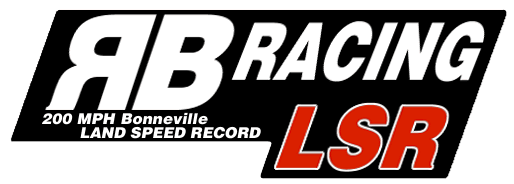
The Question Everyone Asks: " What
is the best 2-1 Exhaust"
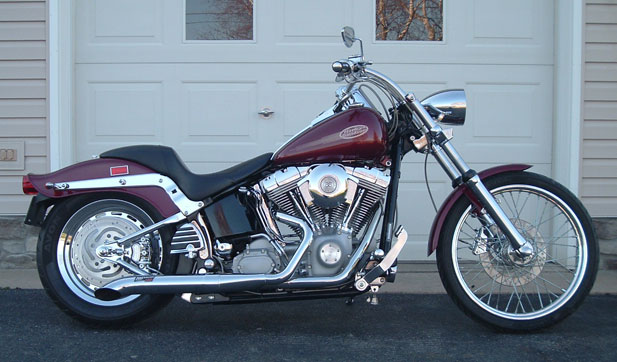
What is the "Best 2-1 Harley Exhaust"...Everyone asks this question. "Best" is relative and depends on the individual. There is no "Best" that fits everyone which is why we have so many options. For us "Best" means simply we have tested the designs over the years and they have been proven by our customers and our own testing to"win"...Win what? Well they sound better. They provide big dyno numbers. They work at the track. They hold up as the years roll by and people are happy. That's a win.
If you want to make power on a multi-cylinder
engine you have to use a collector system. Whether it's a
V-Twin or a V-8 it's the same. Not using free exhaust energy
to help your engine breathe is downright criminal.
No matter what the conventional wisdom is,
staggered duals on a Harley will not make more power. You
simply cannot escape the fact that a properly designed 2-1
will give you more usable torque where you need it, in the
2000 to 4000 rpm range, which means less downshifts and less
rpm to get the job done.
A set of short staggered duals at peak rpm can be made to produce good power but they will be dead on their ass until they get there, whereas an engine developed around an LSR 2-1 exhaust can be made to perform from the bottom up with no dips in the torque band!
Pictured above is our LSR 2-1, 1 3/4", C Style,
turnout part number 00-1167 with optional 45 Degree rotation..
Twin Cam 88, 95 cubic inch. 2" versions for over 100"
motors. They simply work.
Custom Made for Your Application Over 450 Part Numbers...Click Grey Button to Your Application
From EVO Sportsters to the
latest M8's we make the widest range of performance
exhausts with options on primary tube size, tail section
design, and orientation, and even in special lengths and
offsets to accommodate your specific requirements: FXR,
Dyna, Softail, FLH/T Dressers, Road Kings, Road Glides,
Shovelheads, Custom Chassis, Confederates, Bourgets,
Indians, Supercharged applications, S.T.D. heads, S&S
SA B1 / B2 / B3 heads...etc.
Check out the range of LSR 2-1
Exhaust Systems on our Product Page Drop Down Menus for
your Harley.
Larger displacement S&S
T143, S&S EVO 145" are fixtured for as well as are
2024 121" CVO models with VVT.
Note: All LSR 2-1 systems have
welded-in non-removable baffles
2-1 Designs are the best way to make power and torque. If you don't believe this then why is it always that the top Pro Stock bikes, cars etc. end up running collector systems? Damn right they work! If you don't think torque between shifts or when you roll the throttle on, then buy those long sewer pipes or some short curly drag pipes you saw on the Discovery Channel.
Emissions Notice California Customers
Note: We Build to Order
We offer over 450+
part numbers in three different finishes including
different finishes for the heat shields which are,
necessarily, priced separately. In addition, all exhaust
systems are available in both 1 3/4" and 2" primary
tube diameters and in four different product ranges. We
cover everything for Shovelheads to obsolete Clone Bikes
and well as odd-ball requests like 145 Inch RSD customs.
As for different cylinder heads: OEM, STD, S&S B1,
S&S B2, S&S B3 and others are tooled for. It does
get complicated.
There is no way to stock 450 items in three finishes covering over 50 years of Harleys which is why we build to order and why we cannot offer same day shipping.
All systems save
the S&S B1/B2/B3 heads require:
00-1000
Billet Gaskets (2) Evo/TC 88 $9.95
00-1001 Exhaust Nuts (4) Evo/TC 88 $3.00
00-1002 Evo/Evo Sportster Billet Steel 2 Bolt Flange and
clips (set: 2 flanges, 2 clips); Chrome $37.95
Heat
shields are priced separately.
You can order at
anytime online 24/7 or call and you pay when we send part
to final finishing which locks the order in.
Some people are in a hurry or want us to conform to their short schedule and get bent out of shape because there is no instant gratification. Everyone gets the same shake. We roll on your say so but on a logical schedule. Plan ahead...Could be 4 weeks could be six weeks or longer. We get lots of calls asking for "Order Status"...This just slows the process down. Everyone here works, no one sits around.
We build five
major product ranges listed below. Each of these has a
specific purpose.
Three Finishes
1. Show Chrome:
The brightest chrome, the "Hexavalent" process, has been
outlawed in California since January 2024. Chemicals in
the Hexavalent process can be cancerous to chrome
shop operators, not the end consumer. The currently legal "Trivalent" chroming
process has a darker hue and does not visually "pop".
Our chrome shop of 26
years finally shut down their Hexavalent plating line in
2024 in spite of having a two year extension to operate.
We are working with a new chrome plater, in
business for many decades, who still uses the Hexavalent
Show Chrome process and understands motorcycle exhausts.
All LSR 2-1 Exhausts and
heat shields are mirror polished and plated with
Hexavalent Show Chrome.
2. Silver Ceramic:
Looks like polished aluminum, Can be re-buffed with
Mothers Magnesium & Aluminum Polish. Will not "blue"
and will not come off or rust. Holds in heat. Usually
used with chrome or silver heat shields. Fired twice @
600F. Zero problems in more than a decade.
3. Dual Coat Black
Ceramic: Silver Ceramic base with secondary coat
of Black Ceramic. Fired three times @ 600F. ONLY black
Finish that will hold up. Zero problems in more than a
decade.
We offer Five
2-1 Product Ranges...Quiet Touring to Full Race
LSR 2-1 Black Hole:
Our sound cancelling Black Hole design with 00-1416 Quiet
Baffle. For sound issues or if you rack up touring miles.
Touring models: Extends to the back of the bags or an
optional shorter version. Answer to the question: "What is
the quietest 2-1 Harley Touring Exhaust".
LSR 2-1 Pro Stock
Spyder: Pure merge collector race system
with high performance baffle. Optional 00-1416 Quiet
Baffle.
Touring models: Extends to the
back of the bags or an optional shorter version.
LSR 2-1 Turn Out / Slash
Cut: The standard for 2-1 high
performance street systems. Baffled. Optional 00-1416
Quiet Baffle on +5" Slash Cut designs.
LSR 2-1 Pro Stock:
Merge Collector in Pure Race in Standard and Challenge
versions. No Baffle. Optional welded-in 2.250" "baffle".
00-1306R model has a
resonator for Db reduction.
LSR 2-1 Pro Stock RaceCat:
Pure race system with 450CFM Catalytic Converter and
Internal Baffle.Loud but it has a Cat.
Long Slanted O2 Bungs
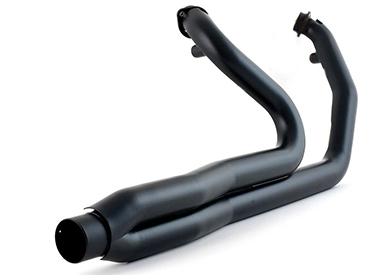
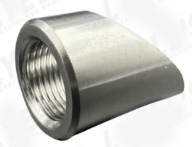
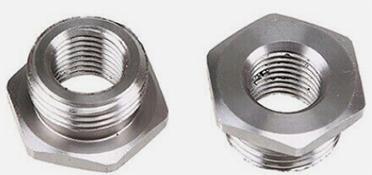
Welded Non Removable Baffles
All LSR 2-1 designs have a welded-in,
non-removable, baffle. LSR Pro Stock 2-1 designs have
no baffle (optional welded-in baffle at time of order).
00-1416 Quiet Baffle is standard on Black Hole
designs and optional on Spyder and +5" Slash Cut designs.
There is no possibility of a baffle or end cap
coming loose. Zero maintenance for life. No tone change over
time,
Our 00-1306R
Pro Stock Resonator designs have a welded-on non-removable
Db reducing resonator with zero restriction.
For those of you who want to "tune" your
exhausts...Not ours as they are already optimized. Consult
your baffle advisor for appropriate anxiety medication.
Slip Joint
Designs
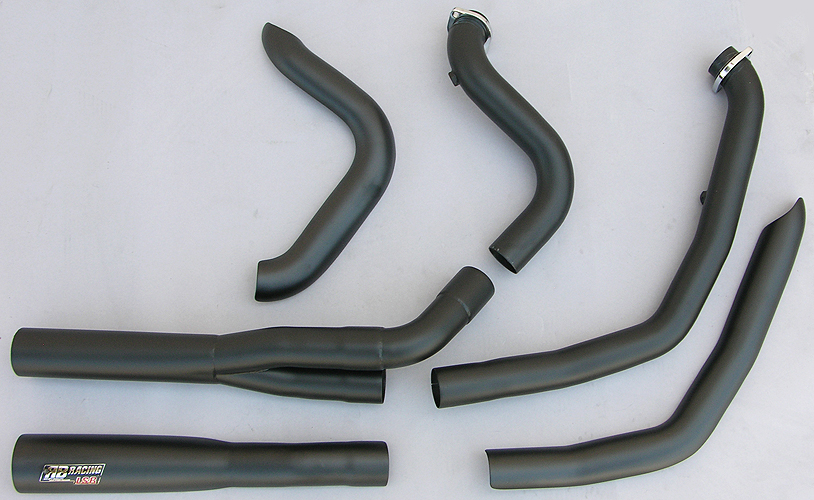
All LSR 2-1 designs feature one or two slip joints to insure the pipes will never crack or break. In the case of rubber-mounted engines there are generally two slip joints, B Style being the exception, with one in the rear primary (see above) and one for the front primary into the collector. All rigid mount engines, all the way back through Shovelheads, have the front primary tube slipping into the collector.
We have customers with 20 year old systems with over 100,000 miles with no issues. When you go back over our 40+ year history we have had to deal with different deck heights and all sorts of different motors which meant solid welded exhausts never fit 100% correctly. We also have special fixtures for taller engines like Stroker Sportsters and all the way to 131, T143, and S&S 145" engines. These also feature slip joints.
The slip joints are just that and
are not meant to have clamps. We put light coat of teflon
paste into the slip joint for ease of assembly. Some people
want to use Permatex Ultra Black...Do not use clamps. These
are slip joints.
Real World Tuning Package
When you order a complete LSR 2-1
exhaust with the RSR Air Fuel Ratio
Gauge and The TTS MasterTune there is a $100.00
discount on the total price. You can observe while you ride
in the real world to evaluate transitions and wide open
throttle . In actual dyno tuning you really have to hold one
"site" i.e. the intersect of load and rpm to get an accurate
feedback. That's why you see Superflow engine dynos doing
step testing. We run a Superflow Cycledyn.
The problem is things heat up in
these air cooled engines and the hidden code in the Delphi
ecm starts changing things. You can really only do one
wide-open throttle pull and one rpm site before the engine
heats up too much. Best do real world data recording with
the TTS while you ride and then evaluate, in real time, your
map with the RSR milisecond fast RSR Fuel Ratio Gauge.
Real time monitoring when you ride is the only way you can
evaluate transitions, acceleration additives, and wide open
throttle...all in the real world air and on the road like
you do normally.
New Small (12mm) and Older
(18mm) O2 Sensors
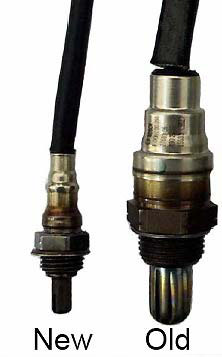
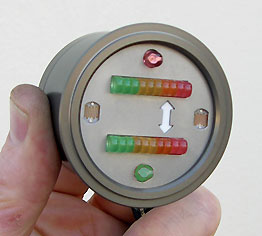
In 2010 FLT/H series went to the new small heated O2 sensors. The Dynas and Softails went to these in 2012 and the Sportsters in 2014.
We are tooled for these smaller sensors on all the newer models. The small O2 Sensor models have a floating ground voltage offset that has a complex scheme that varies the signal to meet emissions purposes. If you think you are going to trick these you are in for a surprise.
You must specify the year of your motorcycle when ordering the RSR Dual O2 Gauge. Models with the small OEM O2 sensors will require two 18mm O2 ports in addition to the 12mm ones to monitor your bike as you ride. Our RSR Dual Gauges will monitor the 18mm high temperature O2 sensors we supply. It is the only method to monitor both front and rear cylinders of your bike as you ride. Real world observations to perfect your tune. Better than a dyno which tends to overheat your motor quickly skewing your tune
RSR Air Fuel
Ratio Gauges...While You Ride

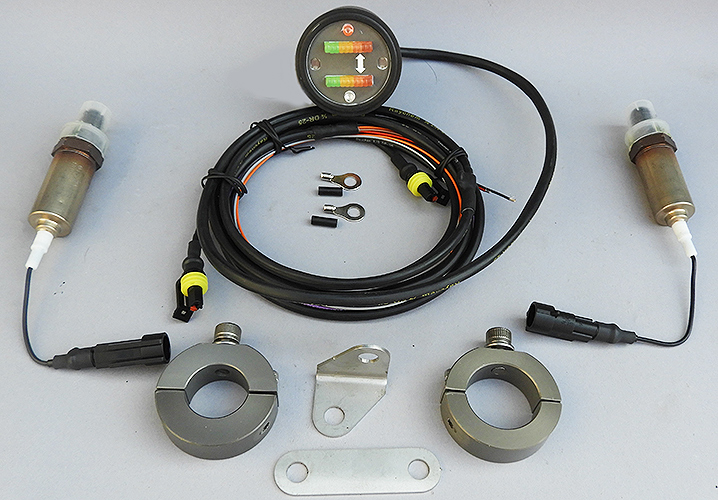
Since we have
been doing closed loop fuel
injection systems for Harleys for more than 25
years and have been putting O-Sensor Ports in our
exhausts for the same amount of time, we have both
single and dual O2 ports for our full range of exhausts.
Our RSR Air Fuel Ratio Gauge
is the best investment you can make for monitoring and
optimizing your engine tune.
All LSR 2-1
exhausts come standard with one or two O2 ports
(Sequential EFI models)...18mm or 12.5mm. O2 or Lambda
sensors are a necessity for either carbureted or non
closed loop efi (Weber Marelli and Early Delphi)
Harleys. We should know, as we have a lot of experience
with them and have been doing Closed Loop EFI systems
since 1989.
The Single and Dual gauges ship with six feet of MIL-W-22759/32 wire. The first 24" is Raychem DR-25 sealed on both ends. If you wish to have a connector at the 24" point there is a $50.00 charge to install either six position (single gauge) or eight position male/female Deutsch DTM connectors with Raychem DR-25 sleeving.
The gauge is housed in a hard anodized round enclosure in a standard 2" format with a 2.250" bezel, center back mount, with a 5/16" x 18 stainless socket head cap screw. The gauge will show fuel ratios from 17:1 to 12.0:1 (or richer). The gauge is visible in daylight and automatically dims for nighttime operation. Only a single L.E.D. illuminates.
Very easy to interpret at a
glance. Scale is, left to right, lean to rich: three
greens, three yellows, two orange and two red l.e.d.s.
You simply cannot "read" spooling digital numbers.
The white arrow indicates the maximum power mixture, the second orange light, which is 13.2:1. Transitory enrichments should not, if the engine is warm (>200F Oil temp), go past the first red light. Readings at the far right side of the scale, the second red light, are simply too rich. Proper closed loop operation will cycle back and forth from green to orange around the center of the display.
It is simply the best way to evaluate the tune of your motorcycle and saves valuable dyno time. Mounted permanently. Waterproof.
Mounts....Roll Your Own or Buy One
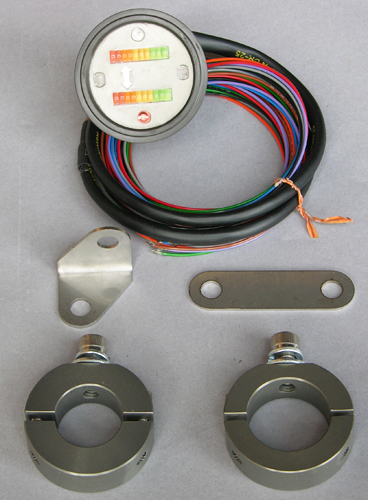
The gauges have a center back mount 5/16" x 18 x 1/2" Stainless Socket Head Cap Screw and stainless lock washer. You can fab your own bracket for this or use the 06-1025 hard anodized Billet Mount System for either 1.00" or 1.25" handlebars $49.95. Optional is the 06-1024 two piece laser cut 304 Stainless Steel mounting tabs for either near handlebar clamp or up the handlebar mounting: $9.95.
Intsallation Instructions for both gauges can be downloaded in PDF format.
Whether your
bike is carb or efi this is the best way to tune...By
riding and observing, not on a static dyno. Dynos are
not exactly real world in terms of loads, airflow, or
transitionals, and even if you had a million dollar AC
Transient dyno room, you would still have to do real
world testing. The gauges are dead accurate and are
millisecond fast responding which makes it very simple
to interpret or remember, even at a glace, while you are
dodging cars watching for cops.
Anyone who tells
you optimizing tuning is easy is full of shit. Engineers
at Ford say they spend two years just perfecting tip-in
or initial throttle openings. Ride, observe,..then
change or edit. Real world.
Pretty soon Harleys will all be watercooled then you really won't be able to tell the difference between Milwaukee and Hammatsu. "The Man" will be sniffing your butt and planting microchips and gps modules up your ass so they can mail you a speeding ticket and keep track of your movements. They already have data recorders on your car so they know what you were doing when the biggie happened. Brave new world. Monitor your engine to get the most out of it before the NSA monitors your tail pipe.
Follow the Orange lights to fulfillment
The Mother of all gauges! Not a gauge, but a precision tool that will tell you exactly what your engine is doing in real-time. Gives you instantaneous read-outs of air/fuel ratios from 17:1 to 10.5:1 and indicates maximum power ratios. Four color display is easily read in direct sunlight and automatically dims at night. Waterproof, billet aluminum construction. Your significant other will cheat on you but this gauge will never lie! It won't keep you warm at night, but a perfectly running engine will look and sound the same when you wake up next to it the morning after.
Customer writes: "When the gauge arrived I knew it would be of a very high quality, it has far surpassed my expectations. I was very eager to get this installed and take a look at my tune. Amazing to see how little adjustments on the carb effect the AFR. As a result of this gauge, I have dropped one size on the low speed jet, raised the clip on notch and confirmed the main jet on my Mik48. Thank you, I really like this gauge. Ed"
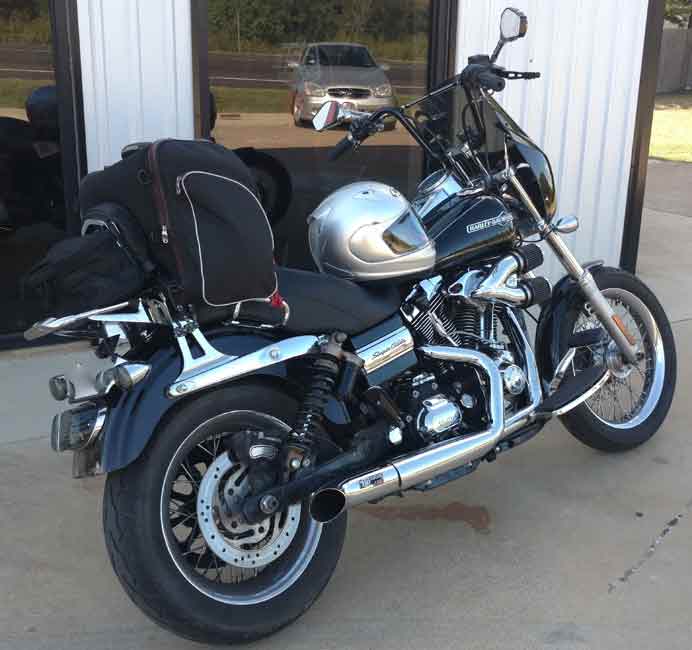
Customer writes: "Sounds like a FAST Harley! Revs quicker. Everyone that knows the bike immediately notices how the engine has better throttle response now. One blip of the throttle is all it takes to spark envy. It has a noticeable volume and powerful sound on acceleration complimented by a smooth deceleration growl. Cruising volume is somehow arguably quieter than the V&H slip-ons that were on the bike previously. The chrome is flawless. Packaging was excellent. It’s amazing how spot-on the fitment of the slip joints are. The mounting bracket is perfect in form, fit and function. Everything eases into place with a slow methodical hand. Don’t force or rush the installation and you will complete it without frustration. I bought the Dual AFR meter at the same time as the pipe. I cannot imagine an easier way to tune with my TTS MasterTune! I was able to actually improve the tune and power while maintaining 43 mpg. Thanks! Ryan"
00-1316 LSR 2-1 using RSR Dual Air Fuel Ratio Gauge.New Exhaust Tech Section
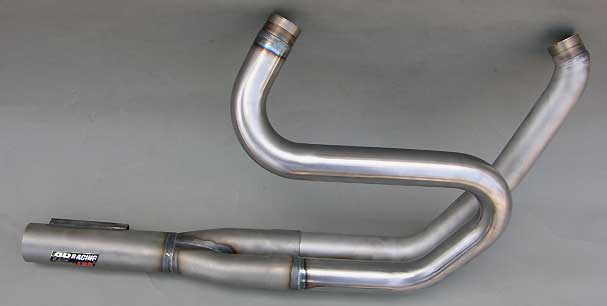
We have given a bit of an overview on the design of Harley Davidson exhaust systems for those who have questions about primary tube length, tube diameters, collector design and the pulsations and wave timing in a V-Twin engine.
LSR 2-1's Down Under
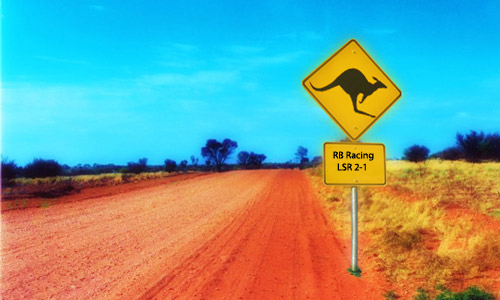
We ship LSR 2-1
exhausts direct to customers in Australia. Middlemen always
seem to want to sell things but not actually buy things...and
when they do, the price goes sky high and often they order the
wrong parts for the customer who has to wait forever... Too
many layers.
We "Build to Order"
all systems no matter who you are or where you are and do not
try to fill distribution channels full of parts. Offering 700+
parts numbers in four different finishes and in four major
product ranges from Full Race to Quiet gives our customers the
exhaust system best suited for their intended purpose. We ship
FedEx Economy on Mondays and Thursdays.
S&S T143 with B3
Heads
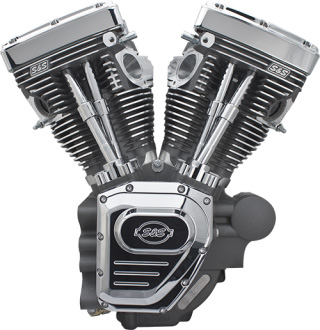
143 Cubic Inches for
your Dresser. Another way to spend $10,000.00 to $15,000.00 to
climb the Horsepower mountain. We are making exhausts for
these with out integral two bolt B3 flanges. The exhaust port
dimensions are not OEM Harley. There are slight variations
between the B1/B2 and B3 S&S heads.
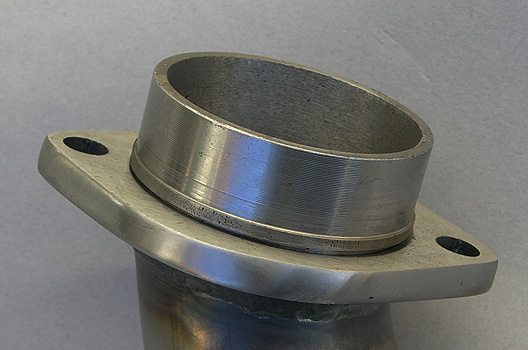
We have made custom
parts for these two bolt T143 B3 cylinder heads. Available for
the four product ranges we manufacture...Quiet (LSR 2-1 Black
Hole) to Full Race (LSR 2-1 Pro Stock). All use 2" primary
tubes.
The new two bolt LSR
2-1 B3 Flange is integral, free rotating, to the exhaust port.
Full tapered cnc machined venturi for 2" primary tubes.
Uses a machined1.875"
I.D. Billet Alumiunm Gasket.
S&S SA B1 / B2 / B3 Heads
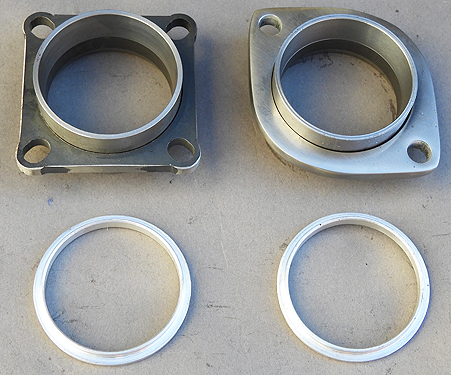
We have been asked by customers to provide LSR
2-1 exhaust systems for B1 / B2 / B3 heads originally found on
EVO and 145" S&S Tribute engines and later T143 engines.
Early B1/B2 four bolt flanges. Later B3 use two bolt
flanges.We make both. The diagonal dimensions are the same two
to four bolt patterns.
We have LSR 2-1, LSR 2-1 Pro Stock, LSR 2-1Pro
Stock Spyder and LSR 2-1 Black Hole designs for these three
S&S cylinder head variations.. Pictured above are our
laser cut flanges and cnc machined hour glass shaped venturis
that we heliarc to the B1 / B2 / B3 LSR 2-1 exhaust systems.
We have a specific fixture for the 126 S&S
and T143 SAB2 / SAb3 Twin Cam Dresser systems as the billet
cam cover is not OEM.
Baffling Alien Discs and
Aluminum Butt Plugs 
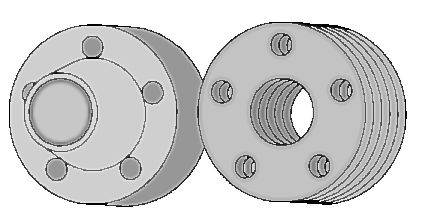

Our testing has shown that the Harley V-Twin is
extremely sensitive to back pressure which is why 2-1's that use
small or restrictive collectors don't breathe well, and why restrictive
baffles shut the motor down. Disc type baffles are good
for spark arrestors on dirt bikes but they have no place on a
big inch V-Twin. You don't make power by adding restrictions to
your exhaust system whether it's a bunch of stainless discs or
some damn piece of aluminum billet machined into a Harley butt
plug!
Ever wonder why they had to put a hole up the
center of the discs? Well, one reason was the discs are so damn
restrictive you have to have several pounds of them to get
enough flow through their waffle shaped passages. Good mufflers,
but they have nothing to do with performance and they sure as
hell do not create vacuum as has been claimed.
When you get confused by all the bullshit simply
ask the following question.." Do they run them in NASCAR or in
Formula One?". Nope, they run straight pipe collector systems
without any stupid discs or aluminum butt plugs. It's always
funny how when the money is on the line, all the little things
like discs, billet caps, anti-reversion flaps, reverse
megaphones and other such nonsense somehow don't make the field.
We weld in our baffles on both ends. There are no
bolts or rivets to come loose, tear or go bouncing down the
road.
One Size Does Not Fit All

Oh, the joys of mass production. It is so easy when you are pumping out tubes with low priced help to compromise and make all your primary tubes one size. Split the difference, cover your ass, ride right up the middle and fill the distribution channels with "one size fits all". Turn up the promotion, anodize some butt plugs, come up with a tricky name that sounds like something from NASCAR or a Godzilla Movie, declare your superiority, get your product in the press, publish some dyno charts and head for the bank. Hey! It's just numbers on a sheet of paper and the one with the biggest numbers wins.
This is the strategy used by manufacturers who use 1 7/8" primary tubes instead of building both 1 3/4" and 2" primary designs as does RB Racing.
Evo and TC88 cylinder head castings both have exhaust pockets that are about 1.920" in diameter. The exhaust port is much smaller than this with a large cross-section diameter of 1.600", but an actual area closer to a 1.500 circle. These are high velocity ports. The quickest way to kill power is to put in bigger exhaust ports or too large a primary tube as the gas speeds drop and, as speeds drop, the pressure rises which results in less scavenging.
This is why Harley uses 1.750" primary tubes with and I.D. of around 1.625".
Once the motors get bumped up in displacement and cnc ported cylinder heads are installed then the picture changes. Going from 80 or 88 cubic inches to 117/124/126/135 cubic inches represents more than a 50% increase in air being pumped out the exhaust port. A 1 3/4" or 1 7/8" design is just to small. Bigger motors require 2" primary tubes.
"One size fits all" may make economic sense in terms of production efficiencies, but it doesn't make sense for your engine.
Customers
Customer writes: "First, I have had your LSR 2-1 C w/Turnout on my 98 FLSTS for about 4 years and 32,000 miles. It looks great, sounds great, and of course, performs great.
Second, the mechanic that works on my bike also drag races a Shovelhead powered FL. He only ran Thunderheader until he rode my bike and did some research. Steve had you guys make him a 2-1 and set new records in his class.
Third, my brother-n-law has a '05 EFI Road King. He was just dying to put some Rinehart true duals on it. I talked him into waiting until he looked at and listened to a lot of RKs before buying. During the year he did this I kept asking what he wanted out of the new exhaust. Finally, he admitted sound and performance. He kept saying I love the sound of your bike and it is fast as hell. So, I suggested the LSR 2-1 C Slash Cut longer pipe. We installed your exhaust, a PCIII usb, and a K&N filter with stock a/c cover and changed the backing plate. His road king has torque and runs like a scalded dog. We both can out run 95" kits installed at the HD dealers.
I provided the background to say this. My B'law took his RK to the HD dealer for the 15k maintenance service. The mechanics went nuts over the exhaust and what it does for the performance. They asked all kinds of questions. They had never heard of your firm or the exhausts. Now comes the kicker and it makes me a little sad (because I have enjoyed having an exhaust that out performs the crap the HD dealers sell). The mechanics conclusion. They are going to take off that HD exhaust crap (their words) and get RB Racing exhausts. Now the word will spread around Memphis and RB Racing exhausts will be everywhere.
It was good while it lasted - having the performance edge over others.
Your exhaust system has been great on my bike for 4 years and 32k miles. Thanks for a great product. I can't imagine having any other brand of exhaust!
PS. Sure wish you would make a LSR 2-1 for Victory Jackpot or 8 ball. The only reason I haven't purchased one in the last two years is because you said you would NOT make a Victory exhaust.
Later…Cliff"
Self-Tuning Myth
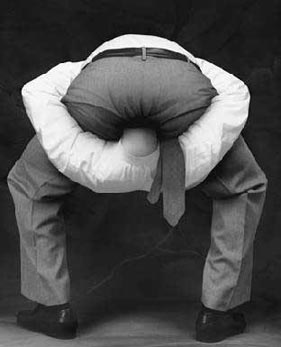
People have the idea that closed-loop systems are completely self-tuning and that they are going to sell you some add-on gizmo that will automatically tune your efi bike. This is a crock of shit. The truth is that every engine is different and, in the Harley world, difference is the norm as there are limitless engine build combinations.
In Detroit, Japan, or Germany, they spend thousands of man-hours developing base maps for their automotive applications. On top of these base maps goes the closed-loop feedback mechanism controlled by mathematical equations or algorithms that govern exactly how the closed loop operation will function. These base maps are not written so the vehicle will run perfectly without feedback i.e. maps are not designed for open-loop operation. The strategy for closed-loop operation is different as fuel requirements under different climatic and altitude differences can be as much as 30%. Unless the base map is constructed for the particular application, the O2 feedback mechanism will not work properly.
OEM correction schemes allow only very slight learning corrections or they will "throw" an error code. They do this for a very specific reason i.e. if things are going wrong, which is indicated by the system trying to correct out of bounds problems, then a sensor or something else is wrong. They are not designed to make large swings to correct calibrations that are way out of bounds.
14.7 / 13.2 = 1.11
People take their perfectly good Delphi electronics and swap them for a self-tuning "Wide-Band" system. The "Wide Band" manufacturers tell you to run their systems at an air/fuel target of 13.2:1. This simply puts 11% more fuel through the engine, i.e. if you were getting 40 mpg @ 14.7:1, you are now going to get 35.6 mpg. You might as well go get a carburetor.
The objective of closed loop and narrow band sensors is to get the most efficiency out of your engine by targeting 14.7:1 except in warm-up, sudden transitions, and wide open throttle, as well as hard deceleration and or fuel cut-off. Ratios as lean as 17.0:1 can be run under deceleration and certain no load situations.
FYI maximum constant torque occurs around 13.2:1, whereas sudden transitions can be anywhere from 12.5:1 to 10.0:1 depending on temperature conditions. It isn't simple. EFI isn't Linkerts, Bendix or S&S simplicity. The closest carb you can get to efi fuel control is a CV Carburetor.
Beyond Stupid
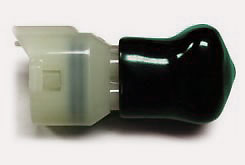
Some add-on boxes for late model O2 sensor equipped oem Harleys eliminate the O2 sensors altogether. Why in the hell would you want to take a self-adjusting, sophisticated system and turn it into a gas guzzling low mileage dumb efi system? Beats the hell out of us and, since we make closed loop efi systems, we do have some experience in this area.
Your bike should be left in closed loop, tuned in closed loop and monitored with O2 displays in closed loop. Correction factors defined in the oem code cannot be exceeded. Maps have to be rewritten for the changes to the bike so the base map is in agreement with the oem algorithms.
Phone Sex and Remote Tuning
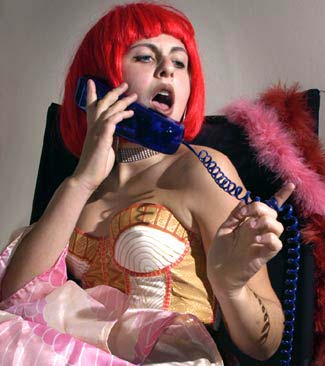
In some sort of logical disconnect a few customers call us up wanting us to tune their bike over the phone and then become increasingly indignant when we tell them it just doesn't work that way. Now, we spent the better part of 14 years, starting in 1976 working on carburetors, jetting, needle design, and even designed and marketed a flat slide carb for the Harley market. Thousands of man hours representing about 5 months out of every year were devoted to jetting issues. It got to be a real issue i.e. it was an interesting experience to define what the correct air fuel ratios should be, experimentally figure out how to measure them, and then deal with tuning die cast critters, often modifying them with extra circuits etc. but, in the end, it was temporal and an endless loop that did not exactly pay the bills.
We did learn how to make things run well, not that anyone appreciated it. It was fun to watch people try to beat you when they couldn't. Knowledge. Hard work.
Since 1989 we've been working on and manufacturing closed loop fuel injections systems for Harley Davidsons and have set numerous Bonneville, El Mirage and Maxton speed records and won drag racing championships with them. We spent over 3000 man hours writing and perfecting Autocal.V6 prediction and analysis software for our RSR Fuel Injection systems. Why did we spend 3000 man hours? Well, we didn't plan on it, and it's a good way to flirt with insanity, but we saw no other option as digital efi requires hundreds of decisions, all of which are intertwined. No more brass jets. Exponential combinations. Changing points, one at a time is sheer insanity. Progress comes with increased complexity.
These days all Harleys are closed loop fuel injected with a single throat throttle body and are speed density Delphi systems, all very complex. It's the same formula we decided on 18 years ago. The only thing we suggest is that you use O2 signals to monitor and tune the system as the sensors are millisecond accurate and must be monitored at the exhaust port where temperatures are high and as far away from the outside oxygen rich air as possible. We suggest you use software, not hardware, to adjust your system using our RSR Air Fuel Ratio Gauges and keep your bike off of the dyno until the lights in these displays tell you your mixture is correct. Engines operate in a very narrow realm of air fuel ratios. If you want to go to the dyno after this...fine.
Just don't call us breathlessly demanding we tune your bike over the phone.
Superflow
CycleDyn...Testing a Running Motorcycle
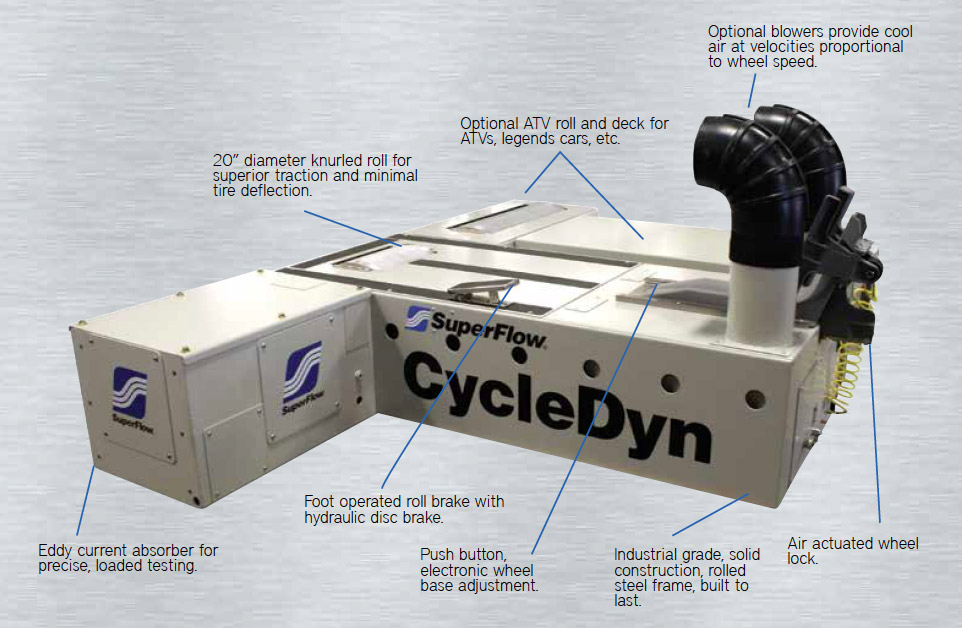
If you are going to use a chassis dyno it has to be a tool and not a toy. At RB Racing we use the Superflow CycleDyn as it best emulates the real world. We use it for development and not for publishing "dyno charts". Most of our work is with Pectel SQ6M controllers which have extensive internal datalogging and playback capabilities up to 2000Hz sampling rates. With the Superflow we can program specific tests and transient sweeps with our turbocharger systems up 750 hp in inertial mode or 500 hp in Eddy Current controlled accelerations.
For those of you who
like Dynojet "Dyno Graphs"..read
this article.
Steve Cole (TTS MasterTune) who has spent untold thousands of hours on every dyno imagineable has this to say about CycleDyns:
Steve Cole: "In the
development side what I can say is the SuperFlow when setup
properly emulates the real world much better. As an example
the only way to get a DynoJet to give you HP and TQ is a WOT
unloaded run. The SuperFlow allows that plus just about any
other combination you like with real torque output. So what
does any of it buy you becomes the question. I can tell you
that if we tune to a DJ and get the best we can, then repeat
on the SuperFlow using real world acceleration rates for the
engine being tested the results are very different. Take the
final calibrations and run them in both dyno's unloaded and
the DJ developed type calibration will show the most HP and TQ
in those conditions, on both the SuperFlow in DJ mode and the
DJ. Then take the SuperFlow controlled condition calibration
and load it in the bike the power will go up when tested in
the SuperFlow mode again which can only be done on the
SuperFlow.
Now the hooker, take the bike and put one of the finished
calibrations in it and give it to the customer and say go ride
it and come back after you've ridden it well, to know how it
feels/runs. They come back after an hour or so then load the
other calibration and ask them to do the same riding over and
come back again. Each and everytime we have done this every
customer has picked the calibration that was done on the
SuperFlow under the controlled acceleration modes! So pick
what works for you but there is a difference. Does it take
longer, does it end with a measurable difference.............
YEP!"
When we have turbo bikes like our Road Glide Turbo it gets a bit interesting to go testing in LA traffic with police, cell phone cameras, and freeway cameras. We still do real world riding with data acquisition as the real world is where you ride.
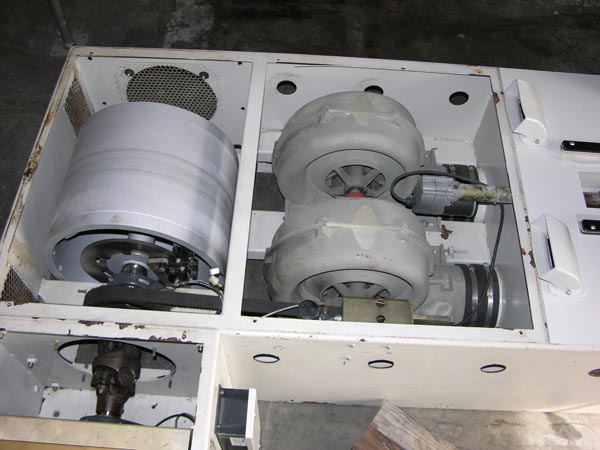
People want "Dyno Sheets"...see below. We aren't going to test every damn camshaft, compression ratio, piston confguration, cylinder head etc as there is not enough money nor time to do so. However, we do testing for our own race development, R&D, and our personal development platforms. These optional $5,900.00 internal "High Pressure Blowers" provide cool airflow to match road speed 1:1 up to 180 mph. Air is also directed to the rear tire. The CycleDyn is calibrated at Superflow at the time of manufacture to measure and account for this additional drag.
Aerodynamic drag in
terms of frontal area can be part of the dynamometer
programming...useful for Bonneville simulation.
When we have turbo
bikes like our Road Glide Turbo
it gets a bit interesting to go testing in LA traffic with
police, cell phone cameras, and freeway cameras. We still do
real world riding with data acquisition as the real world is
where you ride. We used to go to the drag strips...then they
closed all of them. Then we used to ride way out to Avenue "A"
in Palmdale for 200mph testing on a two lane road with low
flying pheasants and farmers with tractors crossing the roads.
Society does close in you you.
Dyno Sheets

People call us all the
time asking for "Dyno Sheets" and we patiently tell them we do
not provide self-serving graphs predicting fantastic
horsepower and torque gains. Plenty of customers send us dyno
sheets but, as we've been at this a long time, we know the
tuning game is too complicated to provide numbers just to sell
an exhaust. Tuning is a multi-variable process.
When the EVO motors came out Jerry Branch published his famous manifesto on tuning 80" EVO motors...In short, unless you bumped the compression the horsepower was not forthcoming. Same these days. In 2014 John O'Keefe of Branch O'Keefe ran an extensive series of tests on OEM Twin Cam cylinder heads to see if he could offer a "less expensive" ported head as everyone with a grinder in his garage was suddenly an expert at cylinder head porting. John found out that any attempt to clean up the ports killed the flow and port velocities dropped. He scrapped that idea and kept his well-proven chamber modification, porting and valve replacement system.
Logic seems to be in
short supply when it comes to tuning. Tuning is not a pipe
changing exercise. The world these days is full of customers
who agonize endlessly over what to buy and then dump these
parts on some unsuspecting "shop-tuner" expecting miracles. It
just isn't going to happen. Coordinated development is
expensive and time consuming. If it was NASCAR developer they
might spend days searching for a few hp or a different curve
for a specific track.
If you are looking for
warm cuddily sheets we are clean out of them. We are tuners
and you can buy all the trick parts in the world and a guy
with a well tuned mild bike with a good power to weight ratio
will kick your ass. Real world. Find a good tuner or become
one. Look in the mirror.
Steve Cole's TTS MasterTune
Before the Screaming Eagle Super Tuner (SEST)
there was the SERT or Screaming Eagle Race Tuner. Acronyms,
what would we do without them? Steve Cole was the guy
behind the SERT until Harley decided to go with another
contractor. Money. It's always about the money. Since Steve
designed the original stuff, this new stuff i.e. TTS
MasterTune is easier to use and has one benefit that the
"SEST" does not have...You have the ability to save and
restore your original calibration. In addition with the Green
Analog Interface Model you can log up to four analog channels
like Wideband Sensors.
We prefer software solutions to tuning late model efi Harleys and not use any add-on boxes or to replace the entire system with some "self-tuning", throttle-angle based, wide band controller. There are simply too many problems technical-wise with wide band sensors...Stuff they do not tell you about like pressure and temperature compensation issues and sensor latency. You are better off with the OEM O2 sensors. You won't believe this but that's your problem.
One point no one is going to tell you is that Harley has hidden tables that will richen up your injectors if you hold the bike under load, like on a dyno or wide open throttle for any amount of time beyond "x". They don't want you to fool with this. Guess what happens to those people who tune under full load.
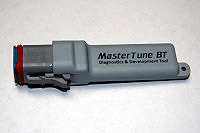
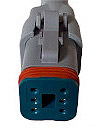
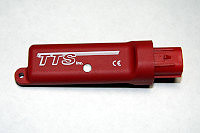
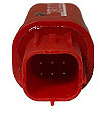


MasterTune BT Communications Interface - J1850 4 Pin
When used for calibration development, this interface marries to the ECM during the first ECM flash and further calibration development can only be performed on that ECM.
When used for vehicle diagnostics and data logging, this interface can be used on any compatible vehicle, even if already married to an ECM.
Mastertune BT Interface communicates to the PC via a wireless Bluetooth connection. Also includes a support loop to attach the interface to the bike via a wire tie.
Compatible with the following Delphi equipped Harley-Davidson Motorcycles:Military Discount
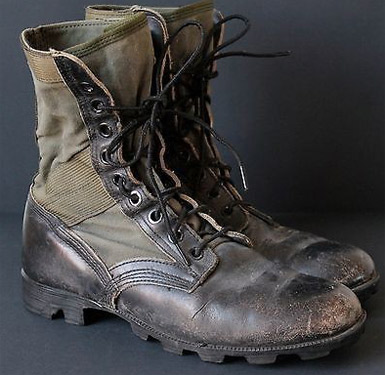
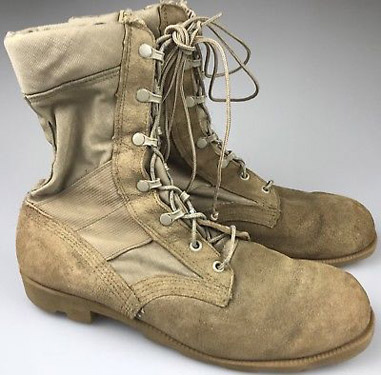
We offer a 10%
discount to active or prior service both US Military and the
Coast Guard on LSR 2-1 exhaust purchases.
Soot
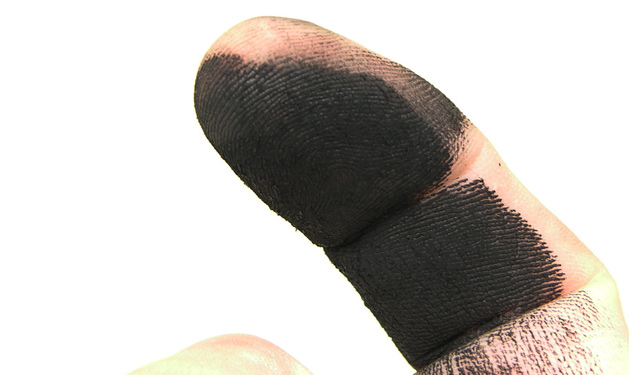
Whenever you look at an exhaust and see it caked in black soot you know the bike is not running or tuned correctly. Back in the mid 1980's we did a carburetor development program for Keihin Corporation for their 41mm CR Race carbs on both Shovelheads and the new Evolution motors. When we were finished the bikes got 56 mpg cruising and 46 mpg if you ran them harder...and after 500 mile tests the pipes were perfectly clean inside and the exhaust ports were dead clean.
If you take the
exhaust system off a modern Closed Loop BMW, as we have, you
will find them dead clean or whitish inside. Harleys should be
the same.
We always ask what
mileage people get from their "tuned" or modified Harleys
after "Dyno tuning"....The universal answer is 37 mpg or less.
If they don't know, we ask them if they have to gas at 100
miles. Most do.
Once a customer bought an exhaust from us and took his bike to two different dynos in search of the "117 Hp" he was looking for for his 103...He got 110Hp. After pissing and moaning we told the guy to give us our exhaust back and we found it caked in soot. So much for tuners and their tail pipe sniffers that see lean reversions...They just kept adding fuel. You tell the customer to put on our RSR Air Fuel Gauge to monitor the mixtures F/R in the real world...No, they want a "Dyno Tune". We have dynos...we know what they do and can't do.
Logic plays no part in people and their toys. EFI is complex...put in larger injectors and all of your warm up, synchronous and asynchronous fueling is out the window, Brave new world.
No soot.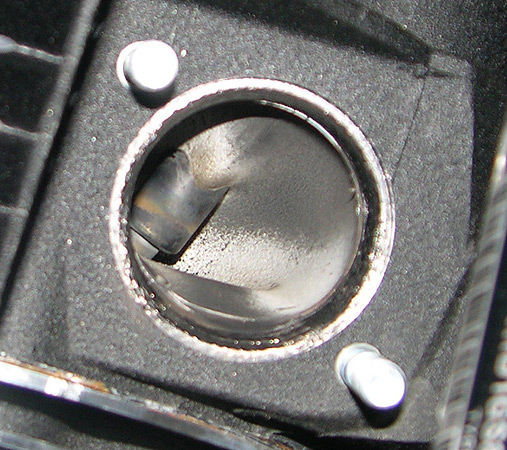
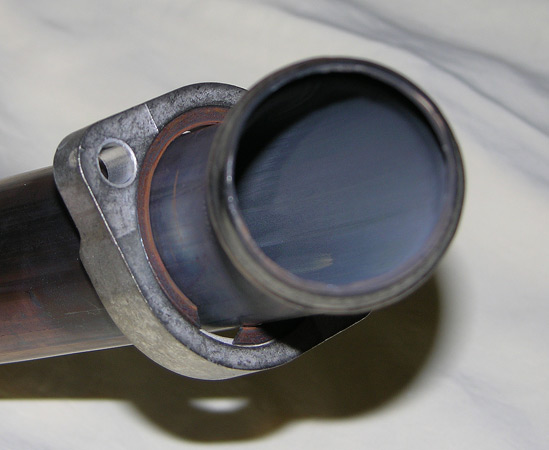
Pictured above is the exhaust port from a 2017 Dyna Low Rider S with about 100 miles on it. No soot. Delphi engineers seem to have done a very good job. Looks like the port you would see on a BMW. Now, when your "Tuner" gets finished with it, it will most likely be full of soot. Logic plays no part in people and their toys. EFI is complex...put in different cams, change air cleaners, port the heads and all this goes out the window. Brave new world.
No soot.
Tuning and Development Stories
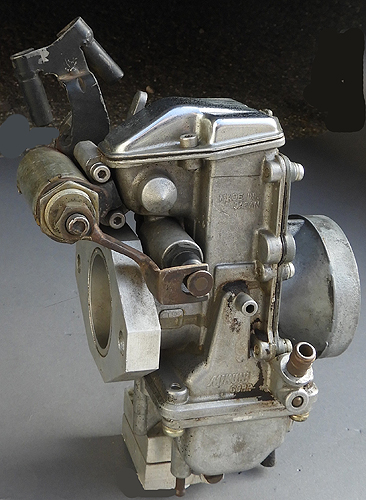
Back in the 1980's we
developed a 38mm Flat Slide Carburetor off a Mikuni casting
that was only used in Japan. We called it the "PowerMaster".
Mikuni American Coropration was sort of upset about this and
wanted to take over the project, but Mikuni Japan told them to
let us do it. We added an accelerator pump that we
manufactured and got the Shoveleads and EVO's working well
and, at one point, even developed an electric automatic choke
mechanism, seen above, as people were too lazy to pull an
enrichening knob.
To retaliate Mikuni American Corporation simply doubled our prices for the castings from $70.00 to $140.00 each after we sold several hundred carbs, so we dropped the project. Since we had all the data, Mikuni USA then asked us to develop a 42 mm Flat Slide for the Harley Market that was originally made for Vance and Hines inline-4 Jap market. We declined.
Keihin Corporation
then asked us to develop the 41mm CR Carb for the Harley
Market. We tested the carb on Shovelheads and EVOs getting
54-56 MPG and turned the data over to Sudco Corporation after
doing altitude tests to 8000 feet as well as hot soak
testing. Kehin actually asked us to do long idle tests
with the bikes leaning to the right even though we told them
all the sidestands were on the left. 1924:
Sometime later we ordered a 41mm CR Carb from Sudco and took it apart. We called them up and asked if they had done further testing and , if they had, what mileage did they get. The answer was yes and they were getting 37 MPG...We responded "That was what we thought". Sudco is now long gone to the carburetor graveyard...closed shop.
We installed the
Keihin 41mm CR on new 1995 Dyna with our original needle and
jetting and the customer ran the bike on a 500 mile run. We
pulled the exhaust off after the run and it was perfectly
clean inside. He marveled at the mileage, over 50 mpg, as his
friends had to fill up and he just topped his gas tank off.
The bike would pop wheelies easily with a dead stock engine
and could do no wrong. The customer then took the Dyna to
another shop and had some work done and a cam installed. He
brought the bike back to us to look at. We looked at the
exhaust and it was full of soot. One ride around the block
proved the bike was gutless and way out of tune. We told the
guy it ran great as we did not want to get involved.
Usually it's people's
inability to tune. 99% are just parts changers. There is no
science in part changing. Guess who gets blamed...The exhaust
manufacturer.
Back Pressure Physics
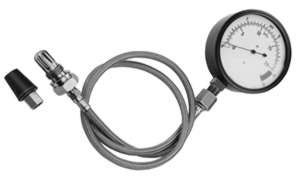
We are going to state this very clearly...Backpressure does not increase horsepower. Period.
An often heard statement from the well-informed is "You need a bit of backpressure for an exhaust to work". Usually this comes from someone who is not a tuner or someone who is faced with a situation where he does not have the tools or means to adjust things. Anything you do in the exhaust will change the flows, the pressures, or velocities somewhat. The correct scenario is that the exhaust has to be properly designed and then you optimize the jetting, ecu data inputs, camshafts, port dimensions, valve sizes and the like. The exhaust has to be designed for the intended use.
This all dates from the early 1980's when Supertrapp invented a muffler designed for dirtbikes to trap potential sparks, or burning, carbonized, bits, so it could have US Forrestry Approval for off-road use. The "trapp" tells what the intended purpose was. If you wanted a Harley to barely work you had to stick a couple of pounds, or about 23-25 of these discs in the end of your exhaust. Of course this didn't really work, which is why they ended up putting a hole up the middle anyway. You don't tune an exhaust.
Your engine has 15 psi (1 Bar) of atmospheric pressure sitting at the inlet and another 15 psi lurking at the end of the tailpipe. The inlet stroke creates a pressure differential and the atmosphere goes rushing inward. The exhaust valve opens and there is a pressure rise in the tube followed by a strong vacuum signal as the gases head down the pipe. Note that we said "vacuum signal."

Pressure differentials can be seen in the exhaust of a jet engine. We have a high pressure pulse coming out our exhaust system but it's just not visible as in the photo above.
The pattern of evenly spaced rings sometimes visible in the exhaust of jet engine is typically referred to as shock diamonds or Mach disks. The phenomenon occurs anytime a flow exits a nozzle at supersonic speeds and at a pressure that is different than that of the external atmosphere. Most of us are probably used to seeing shock diamonds occur near sea level during the takeoff of an aircraft, like in the above photo of the SR-71 Blackbird.
Logical extremes are often used to illustrate a point. For those who argue that back pressure can be a help they might say, from an extreme position, "Let's throw away the exhaust system so we have no back pressure at all". They would then conclude that the motor would run like crap and we would agree completely. The only problem is that they haven't gotten rid of back pressure, they simply have introduced 15 psi at the exhaust port and have given up any inertia, gas speeds or vacuum signals that exist in a primary tube.
The vacuum signal or low pressure that follows an exhaust event can be used to help scavenge the cylinder during overlap when both exhaust and inlet valves are open. Conversely, during this overlap period, the increase in back pressure can cause these burnt gases to re-enter the combustion chamber and contaminate the inlet charge. Result...loss of power.
The proper way to look at exhausts is to view them as a way to maintain the highest velocity that will not impede flow. As velocity increases the pressure drops and the engine can become more efficient. We have all the variables of length, diameter, rpm, collector size, internal shapes and the reflective waves that all this causes. There is no "one answer".
For those of you who disagree
because of anecdotal evidence we would agree with you also.
Stick your finger, washers, or whatever up an exhaust and it
will change things. Altering an exhaust's flow can correct
something else like mixture or spark timing. In the end, if
you have to throw it off a cliff to win, do it. Only results
count and if increasing backpressure helps your situation then
do it. We use baffles that do not impede flow (power) but
maintain high exhaust speeds (lower pressure). People are, by
in large, not tuners just part changers...We spent years doing
drag strip testing before the land got too expensive to
determine the internal shapes of the exhausts.
People who take our advice and use
our RSR Air Fuel Ratio Gauges to
tune and monitor in the real world get the best results.
Broomstick Myth
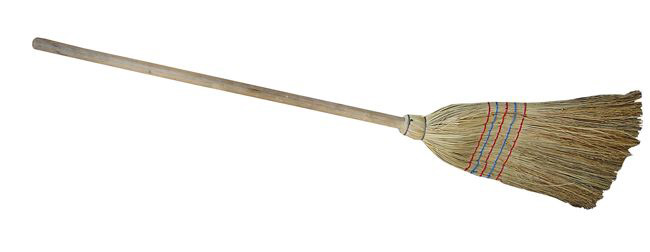
There seems to be a
myth about broomsticks and tuning which goes like this "If you
can stick a broomstick up your exhaust you won't be able to
tune your bike". Well bippies, we went through that more than
35 years ago when the EVOs came out....and well though the
development of our own fuel RSR injection up through the high
end Cosworth ECUs we use
these days...not to mention OEM Delphi systems. Forget the
useless Weber Marelli.
Go to the dragstrip with an exhaust that only bypasses enough air for a 1.0" diameter broomstick and you'll be on the trailer when the engine signs off on the big end (power). This myth continues because of slow reacting Lambda Sensors placed incorrectly in the exhaust system and or control systems using Alpha-N (Throttle angle/rpm) which try to control in real time all the shit thats going on, having too much authority to correct things instead of incrementally learning. Some exhaust system manufacturers place the O2 sensors where they simply are going to read incorrectly. Steve Cole of TTS MasterTune can tell you horror stories about this. Then the "Tuner" then wants to choke up the pipe to stagnate things to get a reading.
We run our Pro Stock systems with no baffles under our RSR closed loop efi systems. No broomsticks and O2 sensors very close to the exhaust valves and get over 50 MPG. At W.O.T. you don't look at Lambda and you don't want a restrictive exhaust.
Internal system shapes
will determine when reflections occur. Sticking a slow
reacting Lambda probe up the rear of the pipe only half way to
the exhaust ports is patently stupid. People keep doing in
anyway. Best use our RSR Air Fuel
Ratio Gauges with Lambda sensors at the exhaust ports.
Fuel Injection..A Reality Check
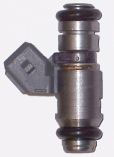
OEM HarleyDelphi
Injectors come in various ratings: 3.91 grams/second; 4.35
grams/second; 4.89 grams per second (CVO); and 6.00 grams per
second. These ratings are static i.e. shorted open. Pulsed
static is about 90% of this i.e. what you could expect if you
maxed them out in your ecu calibration software. If you hold
them to an 85% duty cycle they, respectively, offer the
following horsepower potentials: 105 hp; 117 hp; 131 hp and
161 hp. Now, you can squeeze more out of them by going past
85%, but this is the point where they are still controllable.
We get calls from
people building wazoo big engines and they are still running
the stock injectors. We suggest you get the right injectors
for your engine building projects. We offer a several
calculators for those messing with efi systems. Fuel Injector Calculator
Professional Injector Pulsewidth
Calculator.
O-Sensor Ports
Standard....New Dual O2 Meters

Wideband O2 Adaptations
Systems that typically use Bosch LSU 4.2/4.9 wideband sensors for self-tuning have a built-in problem. First, the "map" has to be correct before any of this self-tuning takes place. Secondly, the real issue is the sensor response time, i.e. the time it takes the sensor to stabilize, and for the ecu to make a corrected output. No matter what they tell your there is a significant delay between the reading and the correction, during which time the engine will be at another rpm/load site . This can be on the order of 980 Ms for the Bosch Wideband sensors which is why, in dyno testing, they use step tests for a number of seconds, letting the engine stabilize at specific load/rpm points, before any measurements or changes can be done. Constantly rewriting RAM locations with "corrections" on the fly is never going to be correct.
Think about it...A high
revving sportbike can gain rpm at 40,000 rpm per second
per second...Where in the hell was the O-sensor reading
on the fuel map? O-Sensors are a "Trim-Function" device
not an absolute control strategy. The base mapping must
be correct and you do not accomplish this by any form of
auto-tuning. Not even in Formula1. Typically a new
Harley can deliver 50 mpg...When these auto-tuners, ecm
rplacements or ecu intercept boxes finish their
never-ending editing you are suddenly in the 30 mpg
range. This is not a good strategy.
The OEM narrowband Delphi
system actually works twice as fast 500 Ms and the
map, as delivered by Harley, is correct. The Delphi ecm
has the ability to adjust about 20% in small increments
(block learn multipliers) to factor for air cleaners
slowly getting dirty etc. It already is self-tuning in a
trim function capacity.
In short, taking off your
fast acting, self-calibrating, Delphi system is just
plain stupid. Use TTS MasterTune and adjust your font
and rear Volumetric Efficiency Tables by observing our
RSR Gauge in actual riding. Don't screw around with
ignition timing...about 32 degree full advance at W.O.T.
is damn close.
Mounts....Roll Your Own or Buy One
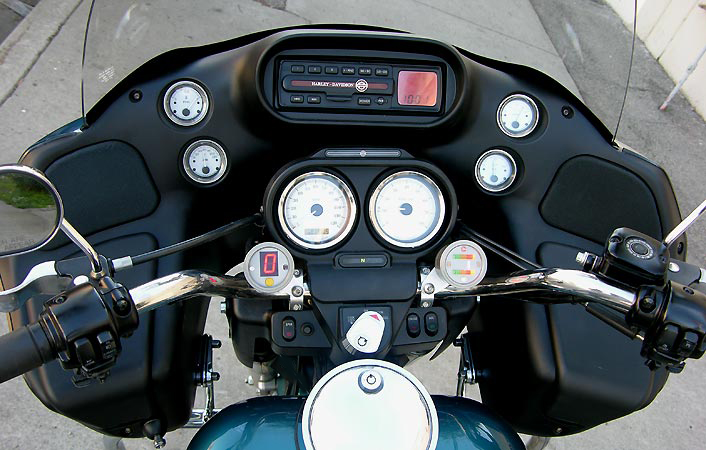
Dual RSR O2 Monitor (06-1003) to the right and ORCA Gear Position Indicator to the left. Dual O2 monitor displays real time readout of front and rear cylinders. Ride the bike, observe and then adjust. Correlate rpm and load and change what you need to change i.e. richen or lean these areas. Cheaper than a dyno, and easier than trying to datalog things. The real world is where you ride...monitor it there. 1" or 1.25" cnc machined handlebar clamps. Part # 06-1025
Road Toad...The Movie
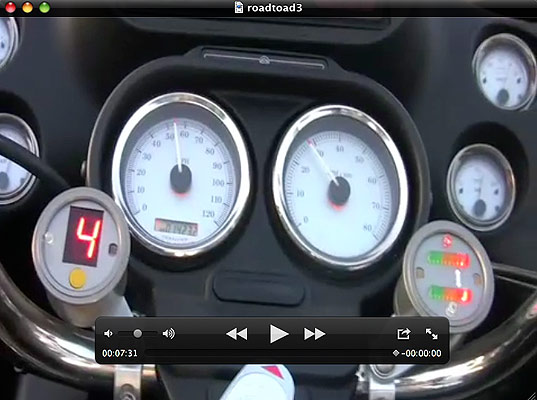
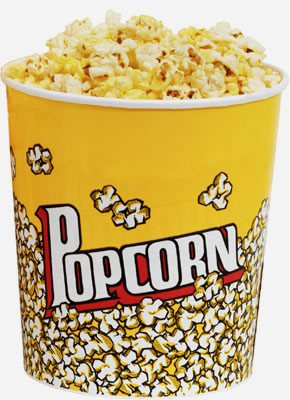
Harleys vibrate. Next time we'll make a better camera mount. Video shows the gear indicator in action on a 5 speed 2004 Road Toad as well as our RSR Dual Air Fuel Ratio Gauge. We made a few edits to the TC88 ECM for our LSR 2-1 Pro Stock Spyder exhaust. Gives you an idea of how we tune things by actually riding them and how useful the Bonneville Gear Indicator is.
Get a tub of popcorn and a six pack and watch a 2004 FLTRI find happiness going through the gears. Make your own movie and get some more popcorn and beer and show your friends how you hit redline in sixth gear. At Bonneville we run five gears but we have a 425 hp Harley...and a lot of beer.

Handlebar Billet Mounted
Bracket: Three degrees of freedom. Stainless hardware.
Part Number 06-1025. For single or dual O2 meters. Meter
has a 5/16" x 18 center back mount should youy decide to
make your own mount system. 1.25" bars pictures left
above. 1.0" bars to the right above.
We have been making single RSR Air Fuel
Ratio Meters (pictured to the right above) for over 30
years. All LSR 2-1 exhausts for the last 30 years have
come with an 18mm front O2 port standard. Perfect for
monitoring and tuning carbureted applications. All LSR 2-1
exhausts can be ordered with two O2 ports regardless of
year at no extra charge. The gauge tells you the truth
whether you want to know it or not. Knowledge is never
easy and since "tuning" is a knowledge-based exercise
there is no microwaveable, instant mashed potato solution
to the truth.
Get the gauge, single or dual display, and
become your own master chef. Single gauges are for
carbureted applications where you only monitor the front
cylinder. The rear cylinder is shrouded and runs hotter
and requires less fuel. Targeting the front cylinder
biases the rear richer that the front. Trust us, we have
lots of experience in this.
Of course it's always easier to yell into a telephone or berate your tuner. Grow up. You bought the bike. Learn to adjust it.
RB Racing LSR 2-1's use large 3" diameter
collectors which are perfectly mated to our 1 3/4" or 2" primary
tube diameters. Both our 1 3/4" and 2" designs feature our CNC
machined Turbo Venturis for maximum flow. We often are asked
which is better, the 2" or 1 3/4" design...The answer is how big
or how modified is your motor. If you are planning to go over
100 cubic inches then go to a 2"primary tube design.
We have customers with high output 96" S&S motors that routinely pump out 112hp with 2" Style "B" 2-1 LSR systems. Normally we say a 96" S&S motor is better off with one of our 1 3/4" designs as there is generaly more torque available at lower engine speeds in the 2000 to 4000 rpm range. If your motor is a 113 c.i. or 124 c.i. S&S motor or a 113/126/132/139" ORCA engine then you should go directly to a 2" design.
800 Horsepower LSR 2-1 Slash Cut
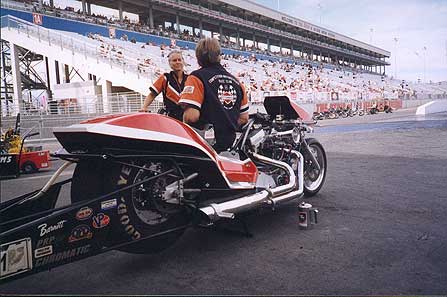
We're not really sure what a 2-1 has to do with
Top Fuel Nitro motors but when Carl Pelletier asked us to make
a collector for his top fuel 175c.i. PRP motor we whipped up a
4" diameter collector and sent him the tooling. Take a Tour of what it takes to run
a top fuel bike. Doug Vancil's hard running Top Fuel Harley
sponsored by Vance and Hines has a 2-1 that looks like one of
their Pro Pipes so when Carl asked us to build one we made
sure the collector area wouldn't restrict each of the 400hp
explosions that were coming from each cylinder.
Carl qualified 8th out of 32 bikes at the final Las Vegas meet and ran in the sixes at over 200 mph so the 2-1 probably didn't hurt anything. His best speed is 214mph with the 2-1 so it didn't seen to hurt anything. Top Fuel is pure insanity and is addictive as Heroin for those involved. Like they say " Gasoline is for washing parts...Nitro is for Racing!".
Potato, Potato, Potato

The sound our 2-1's make is so "right" that customers want them for their sound alone. They have a much more powerful sound because the engine is working easier and the power is much smoother. LSR 2-1s wound out to the max get everyone's attention because they sing the song that only a power junkie would love. Everyday we talk to customers who have tried every pipe on the market and can't believe how much faster the LSR 2-1 is throughout the RPM range. You can expect horsepower gains from 6 to 18 hp over any other design.
On the sound issue, we keep getting asked what a particular pipe sounds like, to which our answer is "It still sounds like a Harley." For those of you who can't remember what your bike sounds like we suggest you buy a small tape recorder ... record your bike and listen to it...you will hear the siren call of the open road and a faint "Potato, Potato, Potato". If this sound doesn't please you or tickle your fancy record a Honda, a Ferrari or your old lady snoring and hook it up to your headphones while you're riding...that is what your RB Racing LSR 2-1 will sound like. One final time, LSR pipes sound like a Harley!...We will tell you they aren't as noisy as a tinny, cheap-ass megaphone! Harley tried to patent the sound "Potato, Potato, Potato" but finally gave up after 5 years of legal hassle.
LSR Baffles are welded into the tail section, have tapered entries and exits to smooth the flow, and never require any maintenance! We aren't stupid enough to weld in some flat plates that belong in sardine cans not on a high performance big twin! LSR 2-1 baffles are designed to achieve the same performance as would an "open" pipe, but provide a small amount of back-pressure to to increase low speed torque by preventing cylinder "blow-down" on camshaft overlap. Actual drag strip testing shows no differences in E.T. or mph with the baffles either in or out.
Pictured above is our LSR 2-1, 1 3/4", C Style, turnout part number 00-1167. Twin Cam 88, 95 cubic inch.
A pipe has to look as good as it works and every angle has been considered with the LSR 2-1. The pipe is designed to follow the motor's lines and to provide the necessary ground clearance while still allowing access to oil fillers, ignitions, and push rods. The 3" diameter tail section is available in Turn Out or Slash Cut styles.
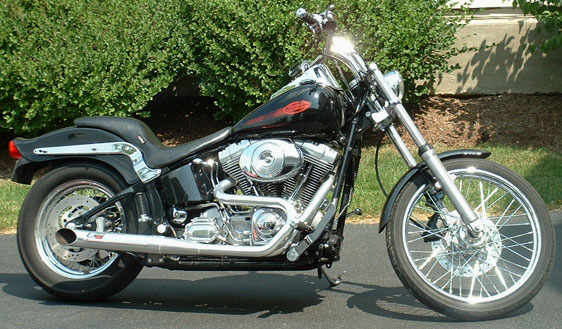
Probably our best performing Softail pipe for smaller (under 100") motors is this 00-1163 LSR 2-1, B Style 1 3/4" with a Turn Out tail section in Silver Ceramic.
Customer says "The fit, finish, sound, and performance are great. I get compliments all the time. This pipe replaced an e-series and I couldn't be happier with it! To any potential customers who aren't sure about their decision... I would say go for it. They won't be sorry. Thanks again for your help."
Customer says "Thanks, I am so stoked about these pipes. For a basic stock motor with some bolt ons, this thing is pulling away from me in every gear. I spent about six months looking at everyone’s pipes. I knew I didn’t want just any pipes for the looks. For the bucks pipes cost, I want the real deal. So far I think I got it. Can’t wait to get to the corner to sport ‘em."
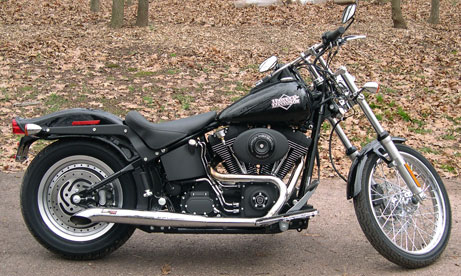
Here's a chrome version of the 00-1163 with the Turn Out rotated 45 degrees.
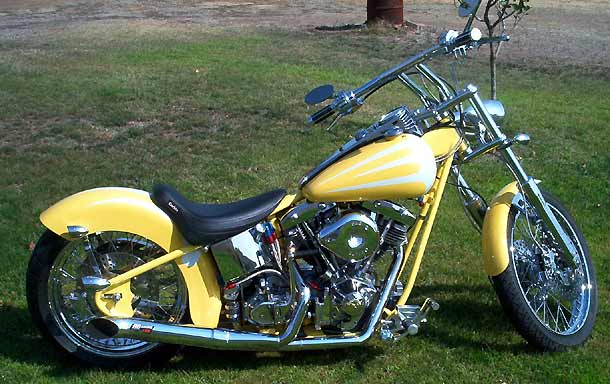
Some models which have floorboards can only fit a "C" Style pipe. As to which one works the best there are too many variables for us to discuss as it varies model to model. Some customers have priorities such as extra clearance for their forward contols and their tennis shoes / cowboy boots / high heels / lineman boots...so they go for the "C" Style. Other customers demand a "B" style because they "know it's better because they had a "B-Style" on their last bike and it kicked ass!" Everyone has his priorities and the bike set-ups are so different that we offer both styles "B" and "C" as well as 1 3/4" and 2" in both Turn Outs and Slash Cuts for most models. Decisions, decisions, decisions!
Pictured above is an LSR 2-1, C Style, Turn Out, 1 3/4", part number 00-1008 for a Shovelhead.
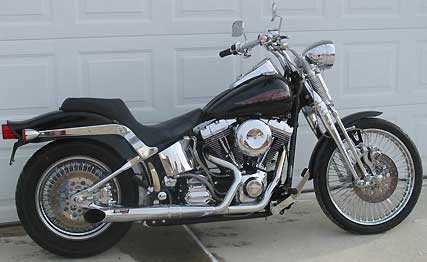
Pictured above is a TC88 LSR 2-1 Turn Out, C Style 1 3/4", 00-1167. Bike has been run for a year with slight discoloration of the primary tubes. Heat shields were ordered to cover this.
C Style Rotated 45 degrees

Customer writes: " Hi all, Here are the pictures of the LSR 2-1 (1167 C-style) that I installed on my scooter. Looks BAD AS HELL doesn't it. This is the best looking 2 into 1 that I have ever seen, in fact, I'm getting compliments from guys who were just like me, "I wouldn't get caught dead with one of those damn things on my ride", till I found this one on the net. Simply put it's the best looking, best performing, best crafted, and the badest sounding pipe I have ever owned! Hell I even bought the heat shields for it, but I'm not putting them on and covering up this piece of fine craftsmanship, until I absolutely have to. Heck with the quality of the chrome on this pipe they may never get installed."
00-1167 TC88 Softail Turn Out rotated 45 degrees.
Comparisons
People call us up all the time and want to know
how how our pipes compare to the "competition"...We usually
respond "Fuck if we know!"...Some people get pretty incensed
at this response and demand to know why we don't go out and
buy other people's designs and "test them". We realize people
are impatient in their desire for someone to make a decision
for them...we just aren't going to play that game. Media is
full of ads with pipes that claim to be king of this and that
and are otherwise oozing with superlatives.
Some manufacturers go so far as to publish dyno charts showing their pipe to be better than Brand "X"...Did you think they were going to otherwise? Comparisons and dyno sheets we would publish would be self serving bullshit. It's a tuner's game and it always has been. We just build parts that don't limit you in this area.

Most of the time the customers do the
"comparison" because the average caller already has had
somebody else's pipe or pipes and is looking for something
better. It's bad science, besides being expensive, to try a
bunch of pipes without trying to optimize the tuning each
time, and we tell people this. We will tell you, however, that
shops that have spent a lot of time trying to wring out a few
extra horsepower generally will find our pipes to give them
some extra horsepower right off the bat and more once they
learn the combinations that work with them.
The real answer is that we have well proven designs that don't represent a limit in your quest for horsepower. The pipe is but one element of the equation. Pictured above is an LSR 2-1, C style, part number 00-1060.
Torque and Ruby Slippers
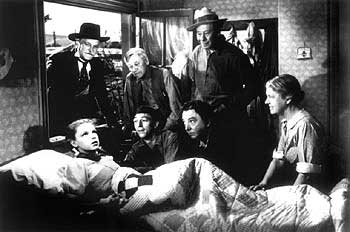
People get pissed at us when they ask for "numbers". We always tell them we "don't know" because after nearly 33 years of tuning and racing and designing we have seen too much and done too much to give any placebo answer. In fact it always depends on the bike and the tuner. No two bikes are alike. Maybe your bike was built on a Monday and they left a coke bottle in the gas tank (old Detroit wive's tale)...Some bikes are faster than others. Everyone believes their bike is "faster". It depends on the tuner and, these days, the bikes are more complicated. People change from chain to gear drives. They put on different cylinder heads. They switch cams. They add on tuning twiddle boxes. They tune, or the "shop" tunes. They "dyno" the bike...maybe even somebody rides the bike with instrumentation like our RSR Air Fuel Ratio Gauge.
People call us up then hang up when we tell them we don't know what their "gains" will be. We don't publish self-serving charts. We just take all the experience we have and build the best parts we can. People end up happy who buy the parts because they are well made and are designed to perform. We make different tube diameters and offer a wide range of systems for any particular bike so you will maximize your potential. There is no "One Size Fits All" at RB Racing.
People who don't buy the parts because we won't coddle them with assurances go elsewhere where Aunt Em will tuck them in and tell them what they want to hear.
Numbers
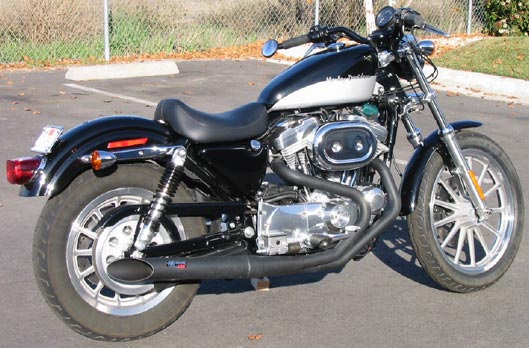
For those of you who just love numbers and not science we'll throw some figures at you that customers call up with: 95" 107 Hp; 96" 112.5 Hp; 104" 128 Hp; 107" 138 Hp; 120" 142 Hp; 113" 142 Hp; 117" 138 Hp; 106" 126 Hp (see below); 104" 255Hp (Turbo); 120" 300Hp (Turbo); etc. etc.
Typical Comment: "Though it took awhile to get it, it was worth the wait... Hi to you all at RB Racing this is Tony D. I got my 02 Deuce back from my tuner today ( had him map it ) it has the 95" kit 10.25 pistons SE HP Heads and SE 251 Cams with a Power Commander on it. It Dyno'ed at 87hp with the Vance & Hines Short Shots I had on it. With your "C" Pipe (1167) it now Dynos at a 103hp WHOW !!!!!!! or should I say Holy Fuck-N Shit !!!!!!! What a diffrence the RIGHT PIPE makes ! Though I haven't put very many miles on it yet the 45 mile ride home was a blast to say the least. A BIG THANK YOU to all of you at RB Racing.You had asked me to send a photo I do not have a digital camera so I will have to send a photo by mail please e-mail me the address to send it to. Again THANK YOU !!!"
Pictured above is a LSR 2-1 00-1023 Ceramic Black Sportster exhaust.
If you are a tuner and use your head as well as your heart you will do well with our exhaust systems. We make about 400 part numbers, most in two different primary sizes, and three different finishes to make sure we have the right part for your engine from an 883 Sportster up to a big inch firebreather. One size does not fit all...One design does not work for everything. Serious pipes for serious motors.
Typical Story...Gained 20 HP
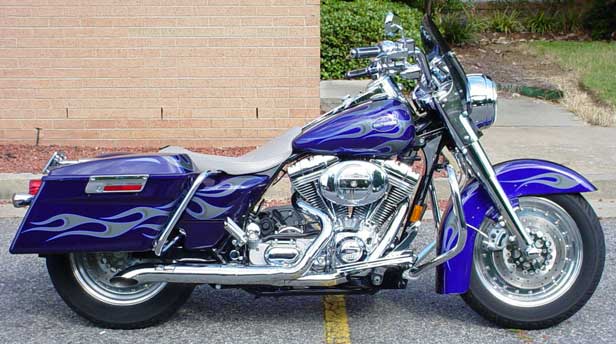
One shop built a 95" TC88 Bagger motor for a customer and the customer put on a set of somebody's NASCAR inspired "duals"...The customer was unhappy with the engine saying it just didn't make a lot of power and that "there was nothing wrong with the duals...there's something wrong with the motor!" They slipped on one of our 00-1124 LSR 2-1, Turn Out, 2" primary exhausts that he borrowed off another bike that was in the shop. The bike instantly gained 20 horsepower and 16 foot pounds of torque. Needless to say that ended the discussion about something being wrong with the engine. They ordered two 00-1124 systems with a 45 degree rotation in the Turn Out.
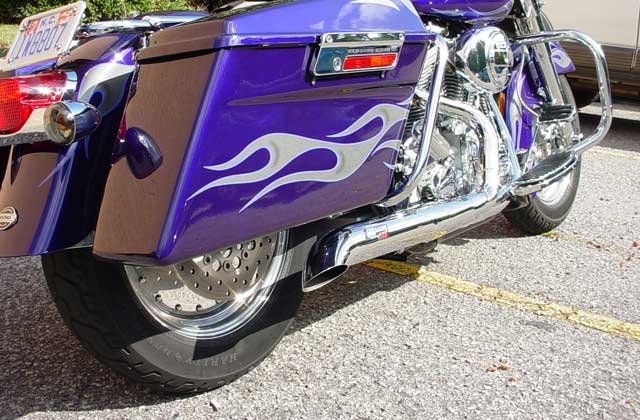
This is the pipe installed on the customer's bike. You can request our LSR 2-1 Turn Out systems be rotated 45 degrees as is the 00-1124 part shown above. The 45 degree rotation is usually where saddle bags are involved. Twenty extra horsepower always makes people happy.
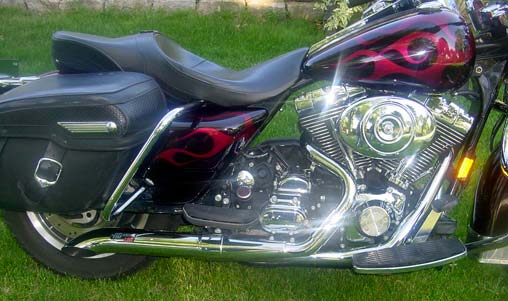
Customer writes: "Pipe performs like a dream bike pulls hard all the way from idle to rev limit its quiet when sneaking home and barks with authority when hot rodding. Fit and finish is excellent ... can't wait for it to show some color, but chroming is so good I might have to wait for awhile. I have tried a great many exhaust systems none compare with yours.I will be using them exclusively . thank you". Part number 00-1124.
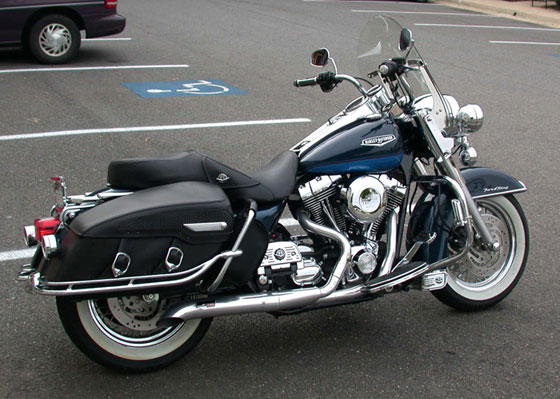
Customer writes "VERY high quality components,
with excellent welds and material. It's clear to see
this is not a hacked product, or put together in a shed.
Precision fitments and the components to space out the
floorboard and mount the bracket are of equal or better
quality than Harley OEM. Impressive!" 00-1122 LSR2-1 Silver
Ceramic, 1 3/4" Turn Out rotated 45 degrees.
Kicks Ass
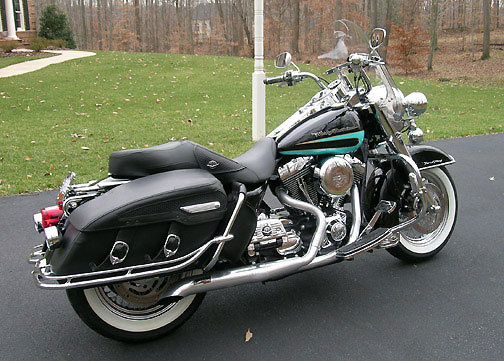
Customer writes, "Noticable power pull on this
pipe vs. my buddie's Road King with the exact same setup other
then he's running Rineharts. No contest on the drag
race. I win handily." 00-1122 Silver Ceramic.
Gained 13 HP
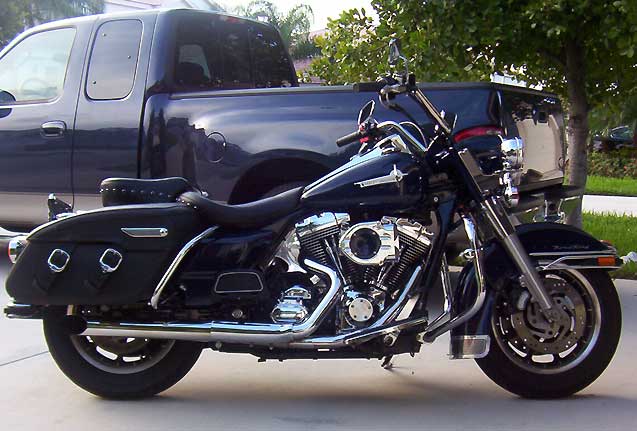
Pictured above is a 00-1145 +5" LSR 2-1; 1 3/4" Slash Cut with three piece heat shields. In general, big inch baggers love the 2" LSR 2-1 exhausts..." I picked up 13.5 Horsepower and 11 foot pounds of torque on my 116" over my V&H Pro Pipe!"...customer from Texas.
Ease of Installation
All LSR 2-1's are constructed in a number of
fashions depending on the style of pipe and the model they go
on: On rigid mount applications like Softails and most
Shovelheads we use a"two-piece" design for "B" and "C" styles.
The rear primary tube, the collector, and the tail section are
welded into one assembly, while the front primary is a
separate piece that slides into a precision "upset" slip joint
that is permanently welded into the collector right next to
the rear primary tube.
This two-piece design makes the pipe supremely
easy to install and offers three additional benefits: (1) We
get better chroming on the front tube; (2) The slip allows for
minor variations in exhaust port heights; (3) The slip joint
allows a tension-free final positioning of both the head pipes
as well as the tail section in relation to the mounting
bracket, thus reducing stress/vibration fractures. There is no
cussing when you install an LSR 2-1! On rubber mounted
applications that can use "B" style pipes like FXRs and
DYNA models we use the same "two piece" design.
On rubber mounted applications that use "C" style pipes like FLH/T/Road King as well as certain DYNA and FXR models we use a "three piece" design that adds a second slip joint in the rear primary tube. The shorter rear primary tube is exceptionally rigid and the slip joint removes any stress, preventing fractures in the weld at the collector.
Rubber or rigid we have a complete mounting
solution for your bike. We see lots of combinations, from
stock to offset customs and can provide mounting solutions for
most applications. On the Shovels there are specific mounts
for various models.
We offer general LSR 2-1 Mounting Instructions in a PDF Format.
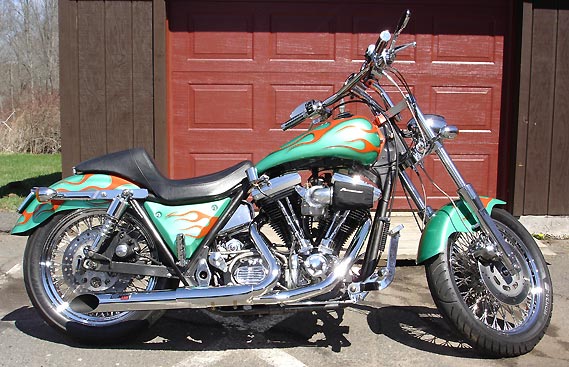
FXR: Transmission mounted using a laser cut 1/4" steel plate and dowels. 00-1181 (FXR Forward Controls) Pictured above. Customer writes " I am very happy with it. It was easy to install and fit very well. Thank you for a great product."
FLH/FLT/Road King: Transmission mounted. 1/4" laser cut steel plate dowel mounted. No oem mounts are used. Remove oem mounts.
DYNA (Evo): Transmission mounted. 1/4" laser cut steel plate dowel mounted. No oem mounts are used. Remove oem mounts.
DYNA (TC88): Transmission mounted. 1/4" laser cut steel plate dowel mounted. No oem mounts are used. Remove oem mounts.
Softail (All): Pipe bolts directly to frame via 3" wide heavy steel "Z" bracket. No oem mounts are used. Remove oem mounts.
Evo Sportster: Laser cut frame bracket replaces oem bracket (all rigid mount models). On 2004 and later models we supply a transmission bracket that attaches to the mid part of the pipe. On 2004 models remove the large oem bracket which requires the removal of the rear final drive cover aft of the transmission. #30 Torx required to unhook rear brake rod.
Mounting Torques
For flanges and mounts we recommend 15 foot pounds of torque. On exhaust flanges you do not use any locking compound as our nuts are self-clinching. On bolts for frame and engine-mounted brackets we recommend that the threads be clean and that a low grade (Blue) thread locking compound be used with 15 foot pounds of torque. Bolts and nuts on our slotted brackets do not require a locking compound but can also be tightened to 15 foot pounds.
In lieu of torque wrenches do not overtighten exhaust flanges to the point where they bend. In the case of bolts going into transmissions and into frames also do not attempt to see how strong you are as aluminum threads and bolts are weaker than you and your wrench are. Simply tighten things till the bolt stops and give another partial turn to firmly snug it. The last bit of tightening actually stretches things a bit and the tension holds things tight. Tightening should always be done in a sequence. Never finally tighten one part then go to the next...Always loosely tighten things in sequence and then finally tighten things in sequence.
The exhaust should never be installed with any of its elements in tension. It has to rest in place without strain and be tigtened without strain.
We employ split lockwashers on most fasteners to prevent counter-rotation. This works surprisingly well if the bolt is properly torqued or tightened.
In any case, you have a responsibility to tighten things or at least check periodically as part of your normal maintenance. Harleys do shake and try to kill anything attached to, or even near them. If things get loose the additional shaking moment can break bolts and destroy threads.
General LSR 2-1 Installation Sequence
1. Remove the OEM exhaust and exhaust bracketry. If the bike has floorboards remove the right floorboard.
2. Pry the OEM exhaust gaskets out of the exhaust ports. We use billet gaskets instead.
3. Install the frame or transmission bracket provided. Use Blue Loctite on the mounting bolt threads into the transmission. Lockwashers under the bolt heads on the transmission mount. If through-bolt like on early rigid Sportsters or Shovels use lockwashers under the hex nuts.
4. Front and Rear
primary tubes: Install billet flanges and clips. Install
front pipe loosely with billet gasket and nuts provided.
Loosely affix the front heat shield to the pipe as you
might not be able to install the shield later with the
rear pipe in place. We use 1/4 drive ratchet plus
extensions and 3/8" socket and a 3/8" wobble for the
exhaust stud nuts.
5. If the rear
pipe has a slip joint (rubber mounted C Style) slip the
rear pipe into the tail section. You may use Permatex
ULTRA BLACK.
6. Begin slip of tail section/rear pipe into the front exhaust slip joint (You may use Permatex ULTRA BLACK) and work the rear exhaust and billet gasket into the exhaust port. Loosely affix exhaust stud nuts provided. We use 1/4 drive ratchet plus extensions and 3/8" socket.
7. Slide 5/16" x 18 bolt(s) into slotted bracket on back of exhaust and thread these through the mounting braket. Loosely affix with lock washer(s) and hex nuts provided. Some exhausts may require a spacer (provided) between the exhast slotted bracket and frame/transmission bracket.
8. Gently tighted up all fasteners and nuts. Nothing can be in tension. You may use a rubber mallet to seat the slip joint(s).
9. Install
remaining heat shields and tighten front heat shield
(5/16" Nut driver). Completely wipe the pipe and shields
down with a clean cloth to prevent grease and oil stains
from being baked on.
10. Run bike
briefly in place. Let it cool down and retighten
fasteners. Reinstall the right floorboard with hardware
provided.
11. If ceramic finishes it is wise to go through several heat cycles. On modern efi closed loop systems they go into closed loop within minutes. Let bike idle for a few minutes then shut it down to let it cool. Several sessions of this will cure the resins as they are only oven-fired to 400F. Exhaust temperatures are >1000F.
12. Double check
all fasteners and ride the bike. Check your work
afterwards. You bought a Harley so you are already showing
signs of dementia.

LSR stands for Land Speed Record and that means only one place...The Bonneville Salt Flats, the Great White Dyno. We have the only gas powered street legal bikes over 200 mph and we're damn proud of it. RB Racing doesn't race typewriters, we race motorcycles and when someone says they get a 70% gain from their system, ask them for their 200mph Bonneville Records or any records for that matter. Hell, if we raced typewriters it sure would be a lot easier, not to mention cheaper.
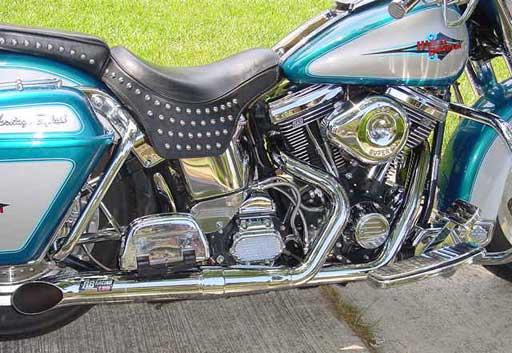
We place an LSR tag on each exhaust system we make so they can be easily identified. Every now and then over the last twenty plus years someone decides to copy one of our designs, usually because some customer is very happy and he "stirs up the pond". They copy the general look but not the features that make them work. The tags eliminate any question about whether it's an RB Racing design or not and allows people admiring your bike to know the pipe's origin.
The tags have proven to be very popular and have been used since 1992. Every now and then someone asks us to not place the tag on their system to which we answer..."send us an affidavit certifying that you have removed all manufacturer logos from your tires, engraved Performance Machine logos from your brakes, Mikuni or S&S identifications from your castings, Harley identifications from your gas tank, Nike logos from your tennis shoes etc. and we'll consider it". The last guy we let talk us out of this was getting his bike in Hot Bike magazine and said he'd give us "credit" for a one off pipe we designed. When the magazine appeared on the newsstand all we saw was "computer designed pipe by Sands Racing". That was the end of that.
New Cloisonne Tags
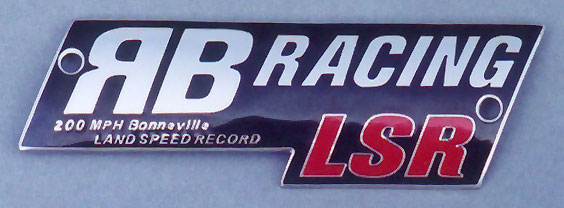
Like in the adage "The relentless search for
perfection" we have upgraded the logos we put on our LSR
Exhaust Systems. Previous tags were stamped and formed
aluminum with silkscreened details. The new cloisonne tags are
a precision die struck brass, nickel plated, with powdered
glass fired in an oven then polished to a jewelry finish.
These are direct replacements for our older tags and are
available for US $25.00 postpaid via US Global Express
(foreign) or Priority Mail (domestic US). They come with black
headed rivets and are riveted in place with a light coat of
high temperature silicone (Permatex 598B) behind the tag. Part
# 00-1009.
Customers Race We All Win
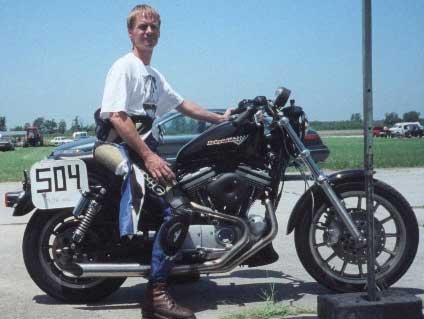
Jim Snyder set new speed records with his Sportster. We couldn't get him a Ceramic Black pipe in time so we sent an unfinished pipe so he could make his race. We shipped his Black LSR 2-1 Pipe a few days later. We love racing. It sure beats the hell out of parking and talking. Race bikes, even if they are street bikes always have a drama about them because they have stories to tell.
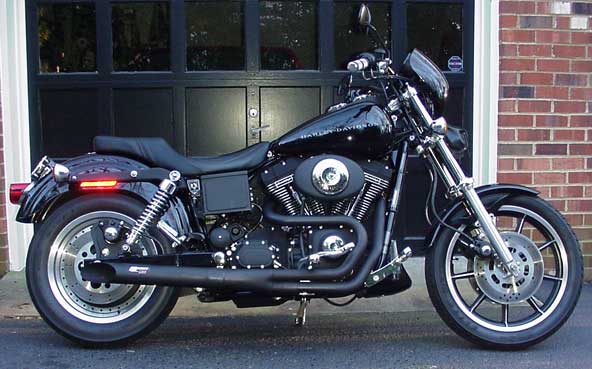
All RB Racing LSR Exhaust Systems feature our "new" (we've been quietly doing it since 1985!) CNC machined Turbo Venturis that actually "scavenge" to help your motor breathe. Machined from billet, these allow full 2" flow and eliminate the phony restrictions that other 1 3/4" to 2 1/4" pipes have at your exhaust port. We supply special close tolerance aircraft nuts for your exhaust studs because our machined venturis are too wide for a standard hex nut. Pictured above is a Dyna TC88 00-1111 in Black Ceramic.
Our CNC machined Turbo Venturis are not compatible with the "bowl-shaped" late model OEM exhaust port gaskets and require early style "flat" gaskets for the LSR Exhaust Systems to both fit and seal properly. The narrow machined flat face of the Turbo Venturi must seat against a flat surface, not the bowl-shaped late model gaskets. Using the LSR Exhausts in combination with the wrong gasket will cause misalignment, inability to tighten the provided close tolerance aircraft nuts, and will force the bowl-shaped gasket into the exhaust port. The correct woven style gaskets to use are: Harley OEM 65324-83 or Drag Specialties DS 174742.
Mandatory for a nominal charge of $9.95 are
a pair of our LSR CNC machined gaskets which mate perfectly with
our Turbo Venturis. These are proven in over 16 years of use on
our race and turbo applications...the only gaskets that will
stay in a turbo bike for 25,000 miles! These gaskets prevent any
gasket "creep" into the exhaust flow and are one more thing that
will give you "an edge" on the competition. We always wondered
why people would port their heads, put in bigger valves and then
squish the gaskets into their exhaust ports.
We bet you never paid attention to what was going inside your exhaust ports for one very simple reason...you can't see what's going on in there once the pipe is tightened! The LSR CNC machined gaskets also insure perfect alignment of the exhaust system. Most fitment and alignment problems are traced to using either the wrong type of gasket or using old gaskets that have taken a "set". We've always used these on our race applications and it's time everyone who's concerned about performance should do the same.
All LSR 2 into 1 exhausts require special close tolerance aircraft nuts to bolt the LSR Turbo Venturis to the exhaust port. Standard 5/16" x 24 hex nuts will not fit. Each exhaust comes with the required four nuts. It is recommended that you order an extra set (4) of these nuts, part number 00-1001, when you order your exhaust.
Pictured above is a 1997 Bad Boy with a Black Ceramic 1 3/4" LSR 2-1, B Style, Turnout, part number 00-1054. The ceramic finish has held up for 5 years.
STD Cylinder Heads
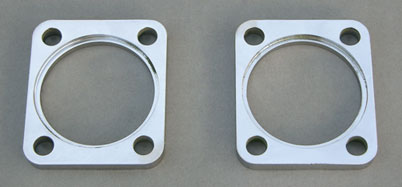
We make special flanges for STD heads (long since gone) that match the rectangular bolt pattern that STD machines. If you order a RB Racing LSR 2-1 Exhaust you can order these flanges which have been designed to fit our standard turbo venturis. RB Racing Part Number 00-1003. Sold per pair $29.95. When you order a RB Racing LSR 2-1 Exhaust system we either polish and chrome these or bead blast and ceramic coat them.
S&S Four Bolt SA B1 and SA B2 Heads
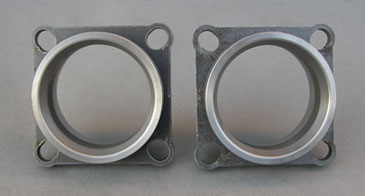
We have been asked by customers to provide LSR 2-1 systems for S&S SA B1 and B2 four bolt heads as well as for the 126" and 145" S&S Tribute engines. Pictured above are our laser cut flanges and cnc machined venturis that we heliarc to the 2" primary tube for the S&S Racing heads. We make exhausts for both the S&S SA B1 and the S&S SA B2 four bolt cylinder heads with raised ports.
The 145" Tribute engines are 1" taller than stock and have special fixtures.
Goo

RB Racing LSR 2-1 exhaust systems use either one or two slip joints depending on the model. We suggest you put a coating of Permatex 598B ULTRA BLACK in the slip joint. None of our slip joints use any clamps because then they wouldn't be slip joints anymore. The inner pipe gets hotter that the outer pipe and they grow into each other and form a tight seal. The 598B is a non hardening gasket material and will prevent any leakage from condensation that forms in the pipe and, with the usual carbon particles, will actually seal better over time. It also makes the pipes easy to take apart later on. Get a tube before you install your RB racing exhaust system.
Custom Made for Your
Application
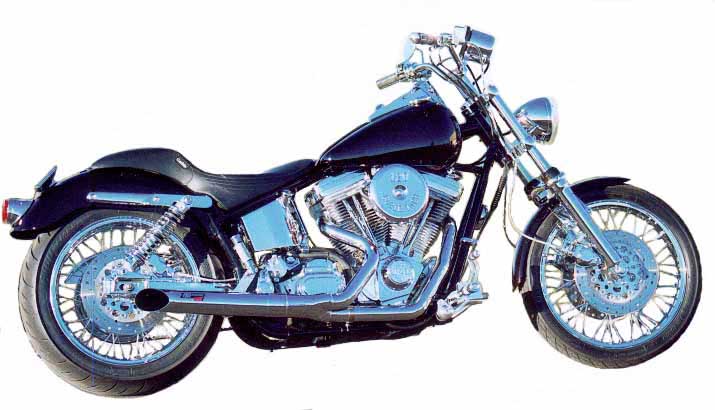
Every LSR Exhaust is custom made for your
particular application. Pictured is an LSR 2-1, 2" Style "C",
for FXRs with forward controls part number 00-1182. The bike
belongs to Dewey Jelen of Deweys Custom Pegs.
It is a special construction 120" Merch motor dynoed at 140hp
(Superflow CycleDyn) in a Kenny Boyce Frame that has the engine
3/8" offset to left and has a thicker billet nose cone from
Jim's...
RB Racing builds LSR Exhausts for every damn
combination you can think of! We can handle offsets for wider
frames and even build "taller" pipes for those applications that
have cylinders that may be 3/4" or more taller. When you order
an LSR 2-1 from RB Racing we build it custom for your
application to insure perfect fit...just be sure to fill us in
on all the weird stuff you've concocted. No wire feed bubble gum
welds! All LSR Exhausts are fully heliarced for the cleanest
possible appearance. It takes five times longer and is much more
expensive but it is the best way to do it.
All motors are not the same size, so we offer all our exhausts in both 1 3/4" and 2" sizes as well as step header 2 1/2" LSR Nitro Duals...We are the only manufacturer to do this! Your new 100+ inch motor shouldn't be choked off with too small a pipe!
Non Standard Frames
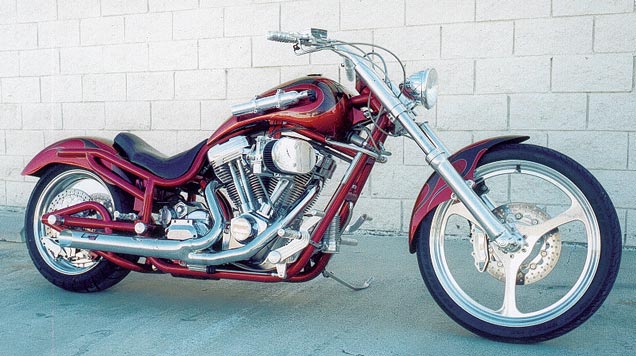
Mais oui mon petit Bourget fabrique en Arizona,
tuyeaux partout! When you start building your dream bike
things often take an ugly turn when you find out that the only
exhaust that will fit your exotic scooter is some serpentine
drag / showpipe that is choked down with a couple of 1 1/4"
i.d. performance strangling"torque cones"...Then you start
looking for a performance pipe and find that everytime you
spend your money the new pipe runs smack dab into your extra
wide swingarm or master cylinder that your frame maker has
conveniently stuck right where the exhaust is normally routed!
RB Racing makes LSR 2-1 pipes for Confederates, Bourgets, Kenny Boyce and other frames including choppers so you don't have to get stuck with a set of non-performing pipes that will keep you parked where it's safe instead of at the head of the pack where your dream should be. Keep the paint up and the rubber down and let the mortals hear that motor sing! Pictured is a LSR 2-1 style C Slash Cut w / 2" primaries partnumber 00-1197 for a Bourget Softail.
Big Motor Applications Stock Harley Frames
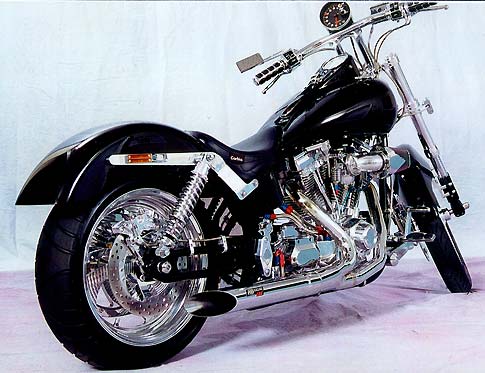
120 or 131 inch Merch or other big bore motors
going into stock Harley Softails, FXRs, or FLH/T chassis can
cause all sorts of headaches when it comes to the exhaust
department. Some of these motors aren't exact replicas of the
Harley V-Twin with different fin structure, fat ass billet oil
filters and chunky cam covers and nose cones that are thicker
than stock. All these things run into exhaust systems and
often the only pipe you can fit is someone's wet dream custom
weird cut drag pipes that wouldn't blow the feathers off a
duck's ass. Rejoice all you sinners who have joined the "You
Can't Beat Cubic Inches" parade to big jugs nirvanna...RB
Racing makes a wide range of B and C Style LSR 2-1 pipes to
fit all these applications.
You might not be reaching for 8000 rpm with the Sportsters but you'll be able to shred your 240 or 250 series donut just fine by 5500rpm and absolutely turn the earth's axis a degree or two right off idle. Just let us know the specifics as to how you've set up your scooter and we'll do the rest. Pictured above is a Titan Gecko with a 107" S&S motor from the Blue Sky state of Montana.
Magnacharger LSR 2-1 Systems
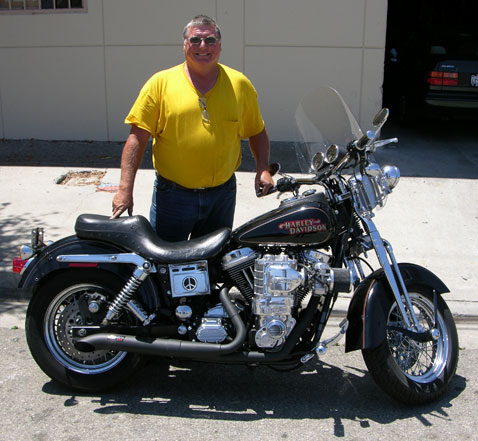
The Magnacharger is a fat supercharger casting that simply doesn't work with all exhaust systems. We have tooled up with eight new pipes for Magnacharger applications...1 3/4" and 2" primary tubes in LSR 2-1 designs, all in our "C" style, somewhat similar to DYNA designs although it is a cross between these and Softail and FL series parts. Check our part numbers page for LSR 2-1, LSR 2-1 Pro Stock. Pictures will be posted as they arrive from installations.
00-1290, LSR 2-1, C Style, in Black Ceramic,
Turn Out Rotated 45 degrees on a Dyna FXDWG. Dave runs to the
pulsations of the mothership and has plans for a Diesel
powered motorcycle. Dave will have us all running on Veggie
Oil or at least he will be when the ice bergs melt and we all
sprout gills. Dave put a Springer front end on just because
someone told him he couldn't. Dave's a Vet....Freedom.
Magnacharger is long gone there days.
Chrome, Silver , Dual Coat
Black Finishes
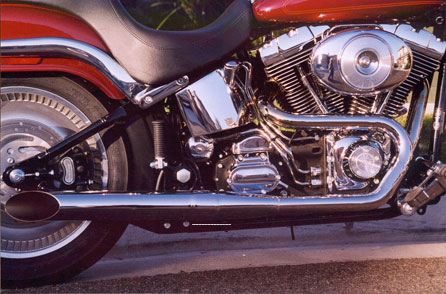
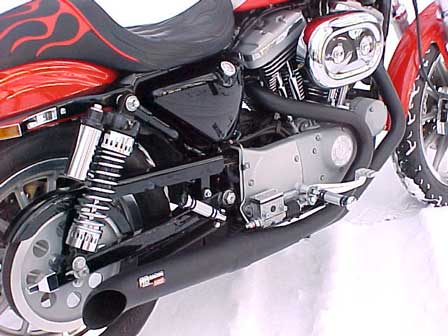
Bike pictured to the left above is a Twin Cam 88
Softail with a Chrome LSR 2-1, 1 3/4", Style "B", part number
00-1168. Bike pictured to the right is an Evo Sportster with a
Black Ceramic LSR 2-1, 1 3/4", Style "B", part number 00-1022.
Chrome or Black: All chrome is full automotive grade duplex
nickel, triple plate; Black finishes are a two layer process
with an underlying base coat and a semi-gloss black final coat.
"Black" pipes are fully polished as if they were to be chromed
to remove any surface defects, then are blasted, silver ceramic
coated, baked, tumbled, cleaned, shot with black satin and then
baked a second time to complete the process. Silver Ceramic
pipes are also pre-polished then are
blasted, silver ceramic coated, baked, tumbled, and final
polished.
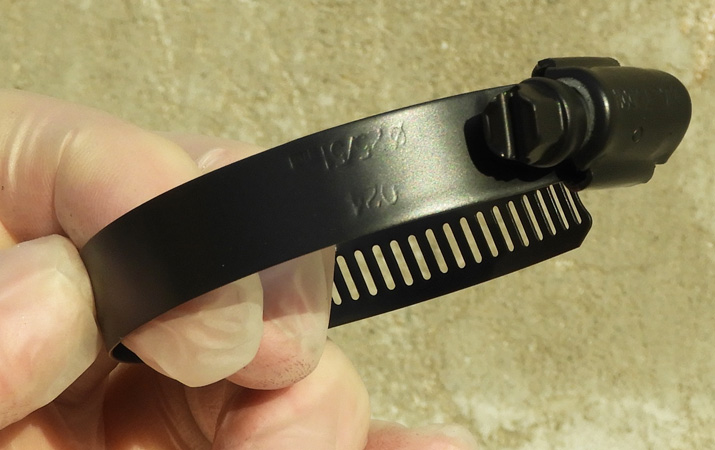

On our Dual Coat Black
Ceramic LSR 2-1 Exhaust Systems the heat shields and heat shield
clamps are ceramic coated with 2000 Degree F satin black ceramic
finishes. These finishes resist carb cleaners and other
chemicals. Our Silver Ceramic LSR 2-1s use silver ceramic coated
heat shield clamps.
Polished Silver Ceramic Finish
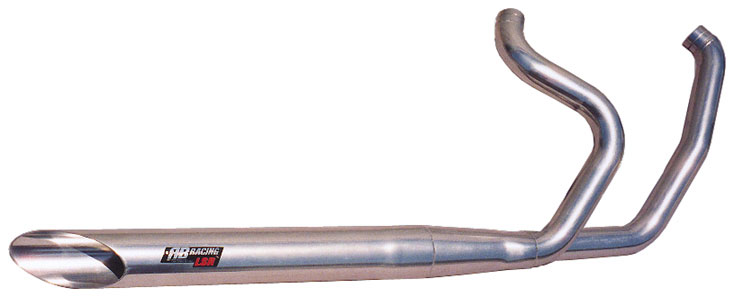
If you are running a late model FLH/T Dresser with EFI you might want to consider this finish as they will tend to run hotter than their carbureted bretheren...and discoloration of the chrome can be an issue. The polished silver ceramic will not change color. If you choose one of the 1 3/4" versions, you can get chromed heat shields for the pipes...three piece for the C style, and four piece for the B style pipes. Pictured above is a 2" primary LSR 2-1 C Style, Slash Cut, part number 00-1170, destined for a big inch stroked TC88 Softail.
We've tried everything you can think of and these are the best finishes. Go to our Part Numbers page to check on your application. Pictured above is our new Polished Silver Ceramic finish on a 2" Style C, Slash Cut, part number 00-1170 for a stroked TC88 Softail.
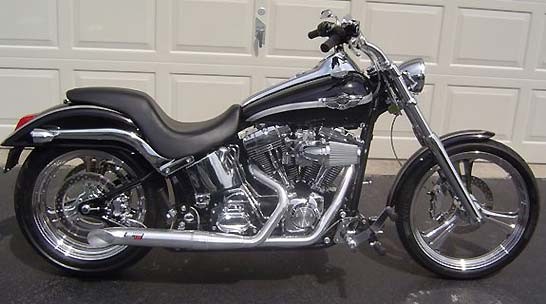
00-1167 TC88 LSR 2-1, C Style, 1 3/4"Turn Out, in Silver Ceramic. Replaced an "E" pipe. More power, better sound, better construction, superior finish...result, one happy camper. Very clean bike with a lot of changes.
New "Dual Coat" Black and Silver Ceramic Finishes
We have a lot more people
looking for durable ceramic finishes and we
think we have the best finishes on the
market. In the late 70's and early 80's we
tried all sorts of coatings and paints and
even used porcelain on some of our products
in the late 1980's. The newer ceramic
finishes are tougher and we use both
Polished Silver Ceramic and Ceramic Black to
complement our usual chrome offerings. The
newest "Dual Coat" Black finish is a double
coat process that gives additional
protection against scratches and nicks,
providing two barriers against
corrosion...Silver then Black on top of it.
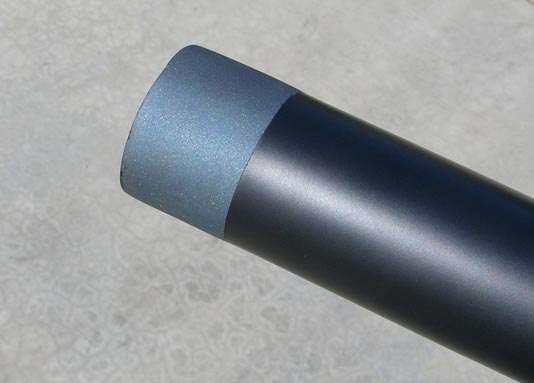
In 27 years we have tried all sorts of black finishes: Kal Gard, VHT, Techline, and others. We also, in the mid 1980's, even tried porcelain for awhile. It chipped and the heat distorted the parts. Most finishes will not survive over a long period unless they have a base coat to cushion rock strikes, moisture and scratches. The surface has to be perfectly prepared and most applications can fail if run too soon at elevated temperatures as they are typically baked at 450 to 500 deg F whereas the cure takes place at around 750 deg F. Lower temperatures will not cure the resins and they will fail once the bike is run. To get around this dilemma for Black Finishes we have found the best solution is a Silver Ceramic cushion base coat and a secondary Black Semi-Gloss finish on top of this.
"Dual Coat" Black Ceramic
finish is expensive as it involves a triple process.
First the parts are polished to remove any
tooling marks.Then the parts are zirconia
media blasted to prepare the surface. Then
parts are cleaned. The parts are base coated
with a Silver Ceramic ceramic base coat and
then a second Black coating on top of this.
Three trips to the oven at 600 Deg F.
The Silver Ceramic finishes can be cleaned with soap and water and scuff marks can be removed with Mother's Aluminum and Magnesium Polish.
Dual Coat Black
Ceramic Finish
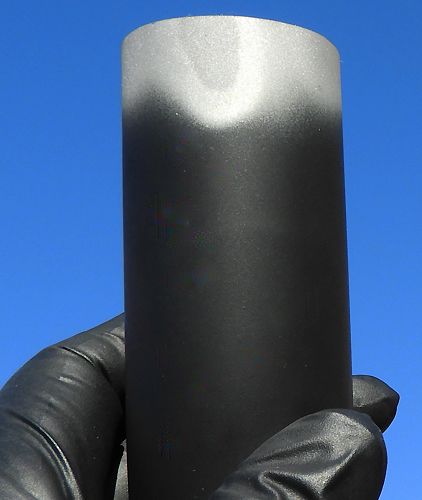
The Dual Coat Black
Ceramic is shown here after we media blast the top Black
Ceramic Coat off with #100 Oxide leaving the base Silver
Ceramic Coat exposed. Holding the blast gun at one spot for a
longer period exposes the bare metal underneath.
Chrome Shields, Black Shields etc.
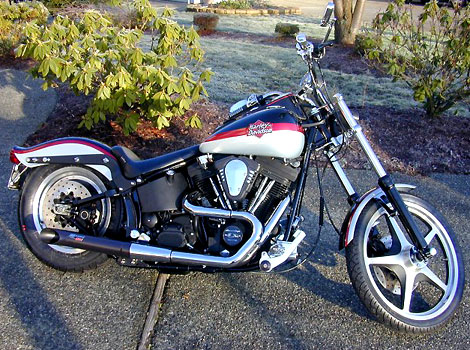
1999 Night Train with a 00-1054 in Black ceramic with chrome heat shields.
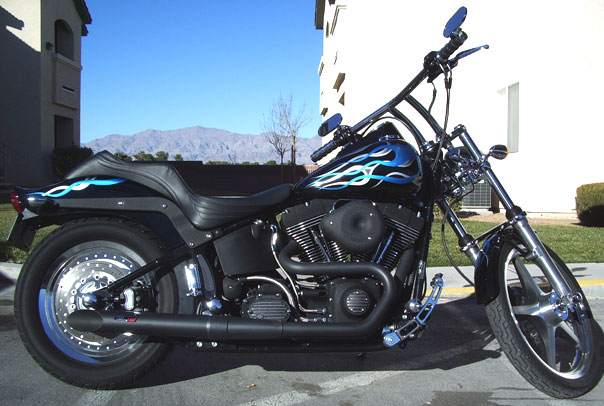
Las Vegas customer writes: "Dear RB Racing, thank you very much for a wonderful product. It was worth the wait. The flat black ceramic finish and the fit of the pipe just overwhelmed me. I have attached a digital picture of the RB Racing pipe installed on my 2002 H-D FXSTBI Night train and the increased performance of the pipe is great.
I had the H-D Screamin Eagle Racer Tuner software installed and tuned on my bike. The horsepower increased from 83.29 to 104.3 and the torque increased from 87.04 to 104 foot pounds. Once again thanks for a great product. I have several other folks who want to purchase your pipe for their bike."
00-1164 B Style 1 3/4" Slash Cut, ceramic black, TC88, 95c.i..
On "B" Style pipes there are four shields: Two
on the rear pipe, one on the front pipe and a shield for the
collector area (pictured above)
On "C" Style pipes there are three shields: one
on the rear pipe, one on the front pipe and a shield for the
collector area.
On LSR Black Holes there is an additional shield on the 4" Tail held by four button head screws
On LSR Pro Stock Spyders there is
an additional shield on the 4" Tail held by four button head
screws
All of the shields are hand-fitted and have
sturdy internal clamp brackets that are helibrazed into
place...not spot welded, which would break.
All shields are serialized with the part number
(3 digit) and an alphanumeric four digit order number.
Maintaned in our data base.
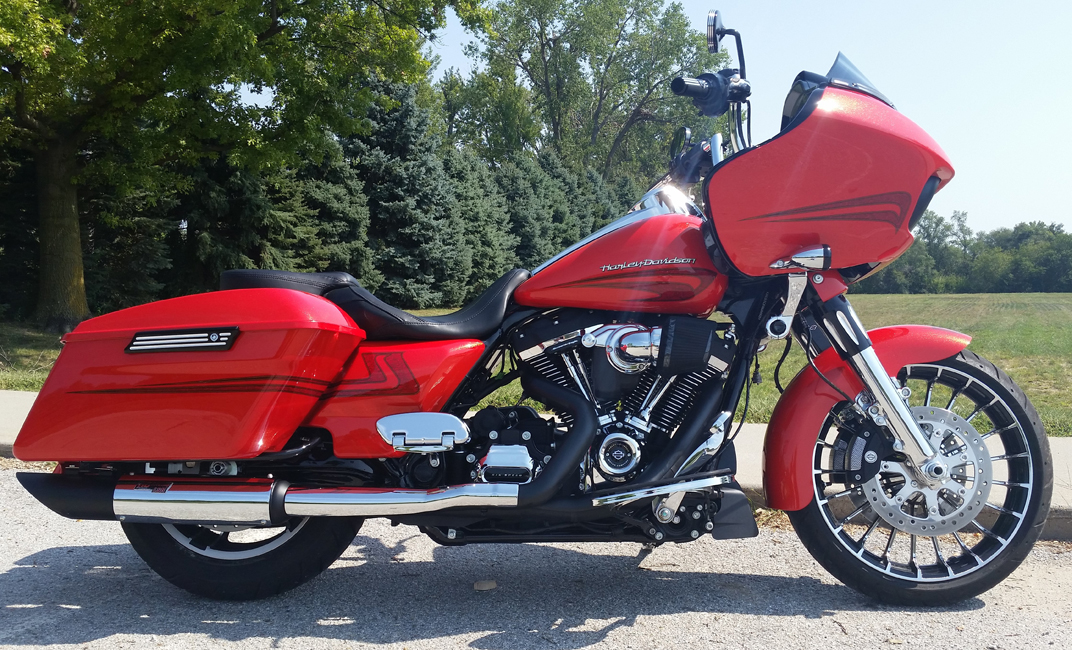
Pictured above M8 Dresser: Chrome tail and
collector shields on a dual coat Black Ceramic system...With
front and rear pipes having Black Ceramic shields.
Black or Silver Ceramic coated shields on
ceramic pipes are popular . Silver shields can be buffed with
Mother's Magnesium and Aluminum polish.
The Black or Silver Ceramic and Chrome finishes
on shields will not change color.
RB Racing LSR 2-1 Exhaust systems are available
for S&S Cycle
Special Application "SA" B1, B2, and B3 heads with 2 inch
diameter primaries. The standard SA exhaust valve is a
whopping 1.75" to 1.800" diameter with a special (non
standard) exhaust port configuration.
These are the best production castings going with their raised inlet and exhaust ports. Oh, you can fool around with the usual porting bullshit, but you'll end up where these castings start out in terms of cfm. Progress is progress and year to year the only horsepower gains come when you make the cylinder heads more efficient.
The problem with the SA/B1/B2/B3 heads is that
nothing fits their bolt pattern and the shallow non-standard
pocket is decidedly bigger than anything sitting on the
shelf...Stock flanges need not apply!
S&S figures you are going to fab your own exhaust so they provide a machined spigot that slips through the four bolt flange. The idea is that you get some springs and make up a slip joint and go creative...this doesn't work on street chassis.
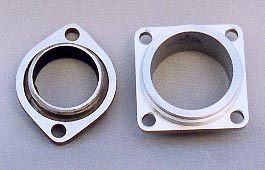
Compare the oem size exhaust flange on the left
(1.625" I.D.) that is used on "billet" motors with the "SA" flange on the right (1.875" I.D.)...get out your calipers and see what's
holding these other motors back.
RB Racing is familiar with these two and four
bolt critters as we use them in our 113" RSR Fuel Injected ORCA motors both turbo and normally
aspirated. For our 113" ORCA motors we use cnc machined
special Turbo Venturis that capture a laser cut four bolt
flange and are in turn heliarced to our 2" LSR 2-1 primaries.
The Turbo Venturis flow 8 to 12% more than a straight section
pipe.
S&S SA B3 heads are 2 bolt versions. The
diagonal pattern is same as the 4 bolt spacing.
R&R Billet Heads
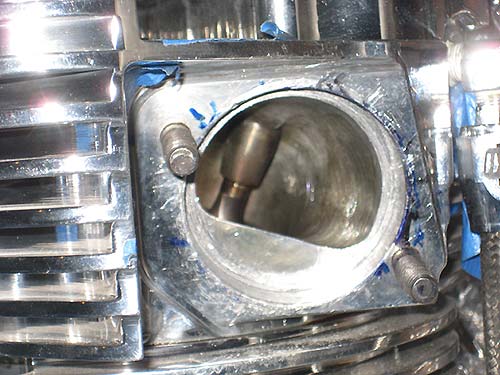
Another non-standard exhaust port. R&R billet cylinder heads. 2.125 x .400" deep. We can make custom exhausts for these but it is a special order item only. These are on a 147" R&R motor.
Ducks in a Row

People are really fond
of trying to organize everyone in various locations to fit
their schedules and project deadlines. Usually RB Racing gets
lumped into this chain of events...shows, dyno guys,
mechanics, trips, races etc. Well, we just really go on our
schedule because there is enough anarchy and angst in the
world to go around. Our advice is to start organzing all the
other people after you get our exhaust because we just run on
our schedule and not everyone else's. Seems to work out best
for the majority this way. FIFO.
Risk

These days people have all sorts of expectations. They want to be loved. They want to be admired. They don't want their chrome to turn colors. They want "numbers". They want assurances. They want guarantees, warranties, trial periods, and return policies. They don't want the part, they just want everything that goes with their household baggage. It's all part of keeping everything nice and tidy and "best". Fear of rejection. Fear of making any decision.
We just come in and make the best parts we can and that's all there is to it. The rest of the equation is too complicated. There are plenty of people who will assure you till hell freezes over. We don't have time for this.
For those of you who do not understand that 1450 Deg F of exhaust flame front will discolor chrome don't order the parts, or just leave the bike on the trailer..or order the heat shields to cover up the underlying discoloration. Ceramic or chome the pipes get really hot and heat shields provide an air gap to protect and hide things.... Melted tennis shoes, burned pants. Air is the perfect insulator.
It isn't the old days anymore. People with $35,000.00 toys roll up in the screaming fetal position. Joy used to be a basket case that you could get running. Brave new world.
Angst

The agony of decision making can drive a poor consumer insane..."What is the best?"...".."How does it compare?"..."What will I get, what will I gain?"..."When can I get it?"..."Should I get a 2" or a 1 3/4" pipe".."Will the chrome blue?"..."Can I talk to someone who has one?"..."How long have you been in business"...""I've never heard of you"... "How black is the black?"..."Why haven't I seen these before?"..."My bike is at the builder and he has to have the pipe by Friday or I lose my slot!"..."Is the silver as shiny as chrome?"..."I have a wazoo998 cam and billet rocker boxes and a 280 rear tire...will your pipe work?"
Right brain, left brain. Fear of rejection. Fear of being different. Social standing. It's all too much for most people to deal with.
Look at the pictures, take the Red Pill, and start your journey. It's that simple.
If you wish avoid any decision and stay right where you are, just take the Blue Pill. If the journey for truth and power excites your spirit, take the Red Pill.
No Limp Dick Designs
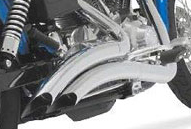
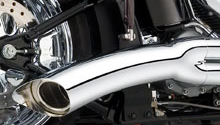
Ever since Jesse James did his original Hell Bent pipes people have either copied them or tried to make whatever they were doing swoopy. If you are a slave to fashion then these might just suit your fancy. At RB Racing we build logical designs that work and leave the limp dick fashion trend to those who love to park and talk.